POTA Activation #10 - Harriet Tubman Underground Railroad National Historic Park and State Park (MD) (4/23/2022)
On April 23rd 2022 my daughter's Girl Scout troop had a trip out to to the Harriet Tubman Underground Railroad National Historic Park and the Harriet Tubman Underground Railroad State Park out on the Delmarva peninsula of Maryland (Parks K-0736 & K-6382). I decided to go for an activation while they had a tour and did the steps necessary for them to get their badge for the event. Afterward, they could swing by and get a taste of Amateur Radio and get on the air for a bit operating under my call.
There is a museum complex and picnic area that is run as a Maryland State Park that is inside of the larger National Historic Park -- a twofer! It was almost a threefer as the state park is surrounded by the Blackwater National Wildlife refuge. Unfortunately, after scrutinizing the maps it became clear that the state park is excluded from the NWR. As it turns out, where I activated was less than 20 feet from the NWR (which appears to start at the water -- there were signs telling you not to go in unauthorized), but not in the NWR.
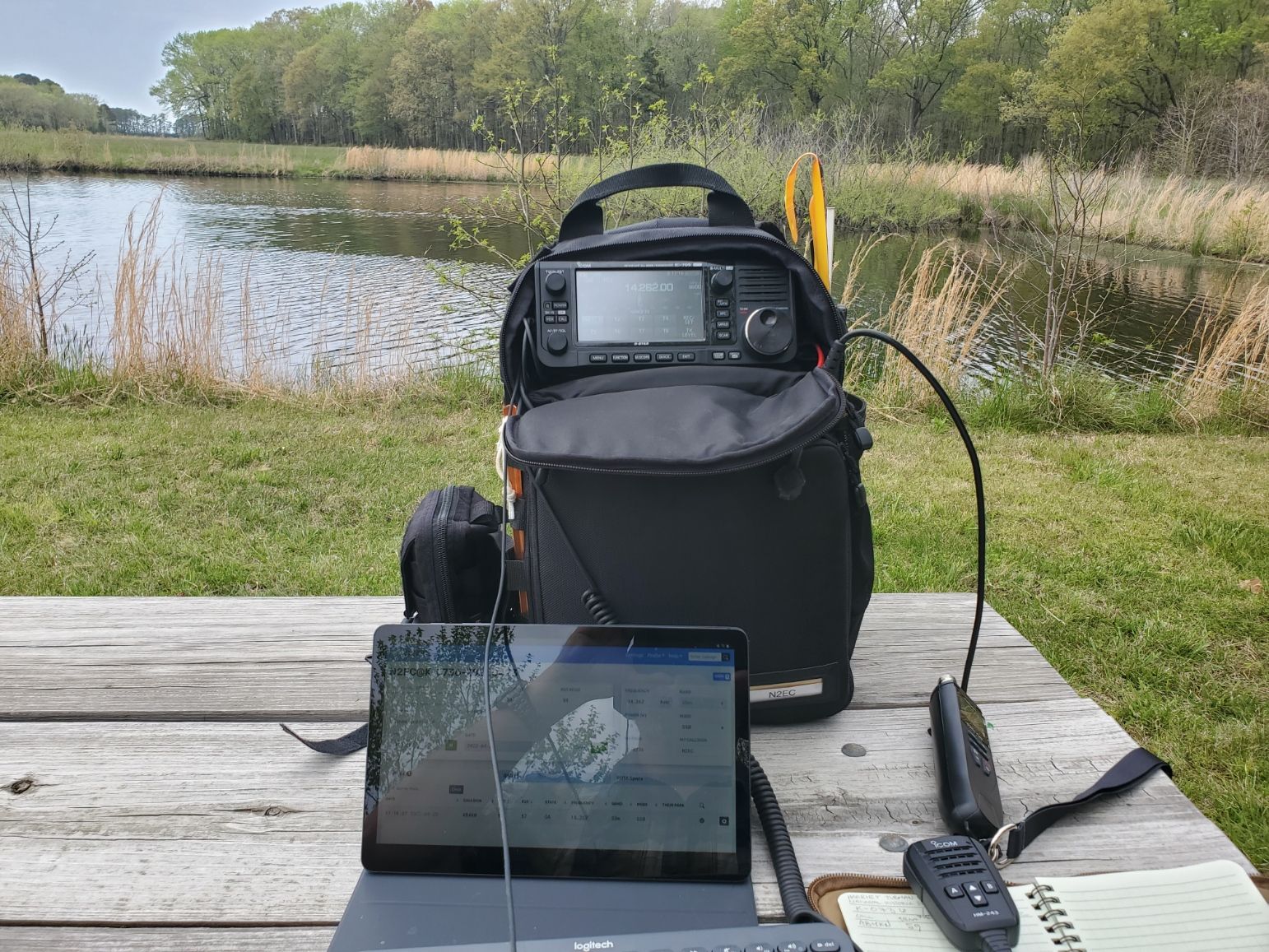
There was also a pavilion there, but there was a large group of Girl Scouts from another troop having a blast enjoying lunch and playing, so I picked a beautifully sited picnic table on the banks of the aforementioned pond and started to set things up. I decided to use my Buddistick Pro for this outing to keep wires to be walked-into to a minimum and was up and on the air very quickly. I set up on 40m, self-spotted, and called CQ, and called CQ, and called CQ ... and nothing. I was able to scan around the band and hear other stations, but nobody seemed to hear me. Very frustrating. After shouting in the dark for a while it was time to change bands.
Off to 20m I went. The band definitely seemed busy, but at first there was more shouting in the dark. Finally I got a call back from a station in Georgia who gave me a signal report of 57. I thanked him for his contact and a couple minutes later got another call, this time a park to park from Wisconsin. I started feeling some optimism, but then more shouting into the dark for a good 16 minutes. Then I got another park-to-park, this time a twofer into Georgia, and I was grateful not only for the park to parks, but for the fact it counted as two contacts. I was staring in the face of what had the potential to be my first failed activations.
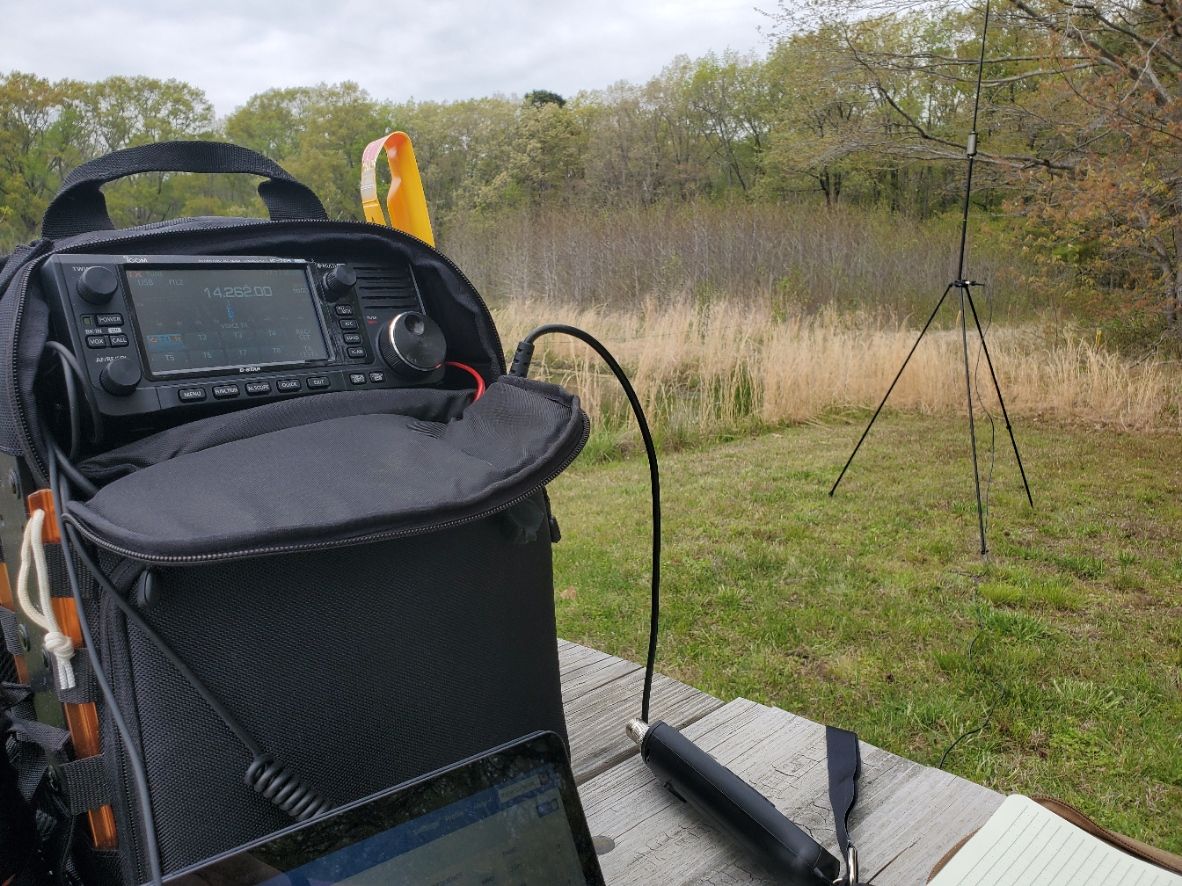
More shouting in the dark ensued, and I decided to give 17m a try after seeing a handful of stations on the band. Maybe conditions were better up there? I was able to hear a few stations there, but they could not hear me. My CQs went unanswered. After a half hour of nothing working, I decided to give 40m another go, so I re-tuned the Buddistick Pro's radial and coil and re-spotted for the band and I finally got a call from Virginia with a 57 report, so I was getting out okay it seemed. Then back to the void for 13 minutes until I got a call from North Carolina with a 55. Then back to no contacts.
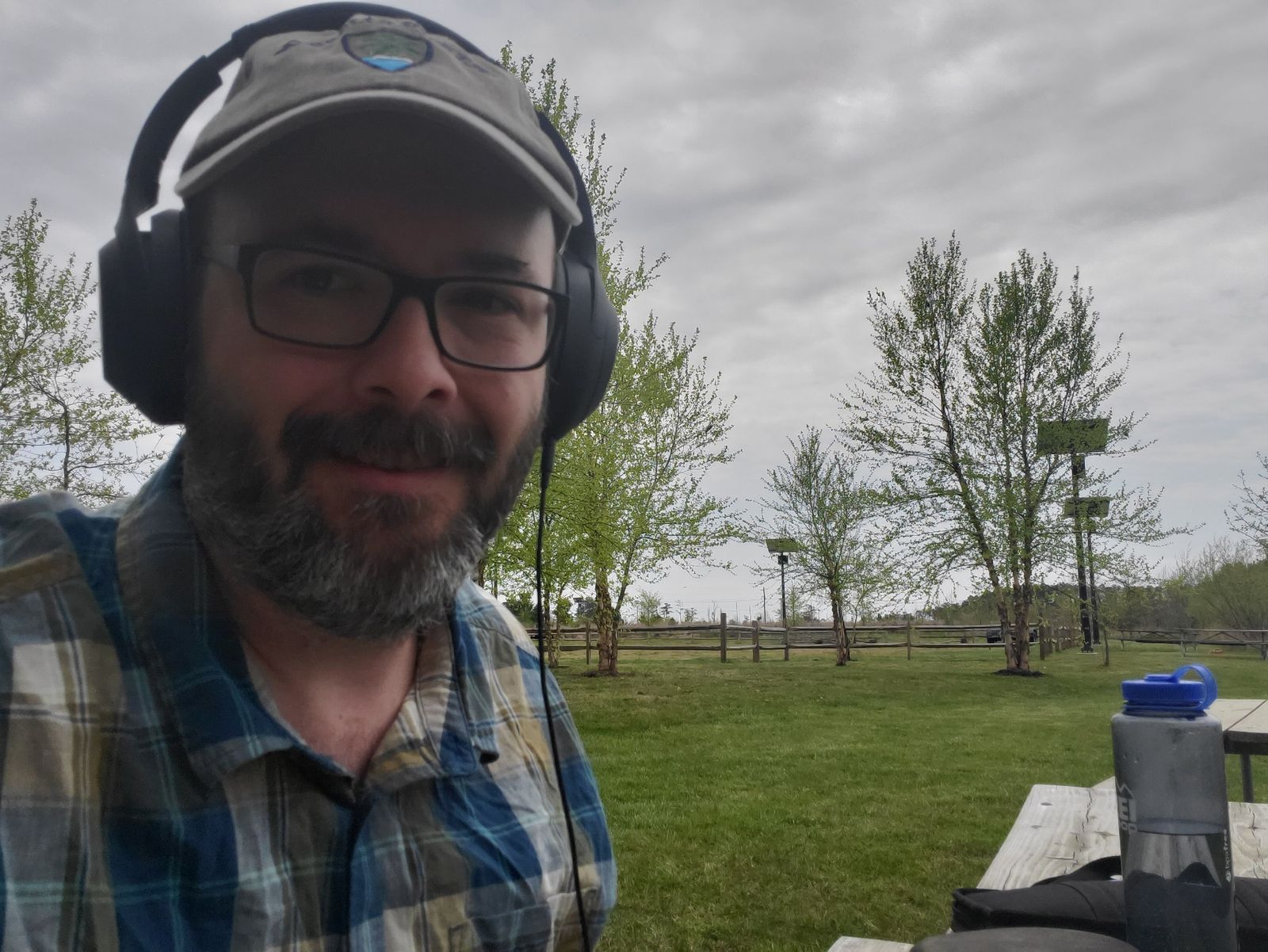
I decided to go back to 20m and as I was re-tapping the coil and shortening the radial I heard the yells of my daughter and her Girl Scout troop. I gave them a quick introduction to the radio and what I was doing, and also tried to temper expectations. In just under 2 hours I had only managed 6 contacts, I knew we had another place to visit and had to get home, so my time on the bands was limited. A failed activation was looking to be quite likely. I had typed up a script for them with the basic POTA exchange and my call done phonetically. A few of the girls got on the air, but for a while we had no takers. After a break in the action, I proposed we do one last try. I did a re-spot and put a note that we were doing a demonstration for a Girl Scout troop and to give us a call.
After a minute or so we got some calls one after another. Georgia was first with a 57 (contact 7), followed by a two operator team doing a Park to Park from Missouri (contacts 8 and 9). Then a call from all the way up in Nova Scotia for contact 10. We had a valid activation! Next we had another call from Missouri to get to 11 contacts before a station out of Alabama started calling CQ over us (presumably he could not hear us). Since we were getting short on time, we decided to call it a day and pack up the station.
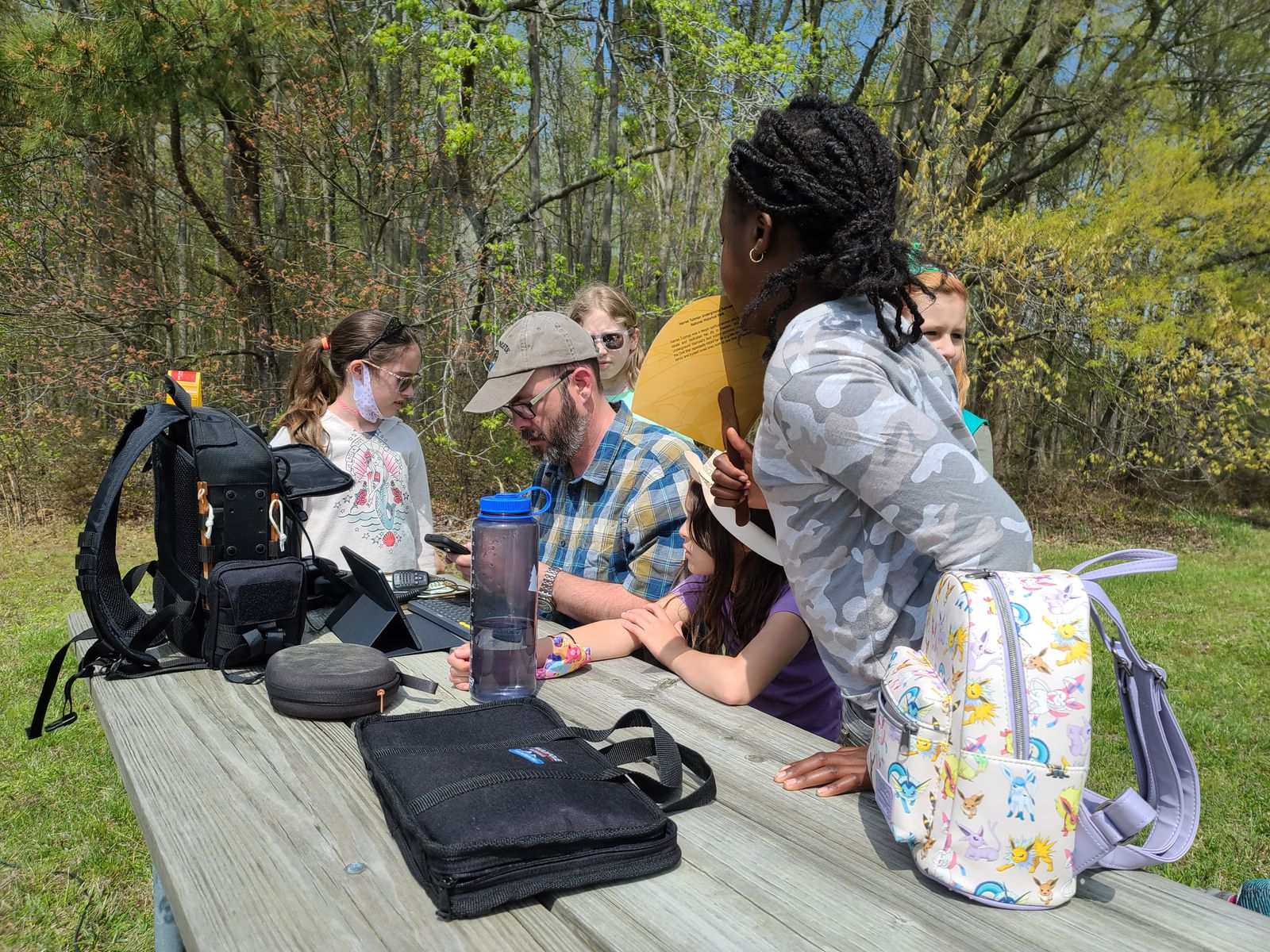
A few of the girls really seemed excited to hear the stations calling from all over. A few times we heard some Spanish language stations that sounded like they were from Europe and they thought it was cool to be able to hear and talk over such long distances. We're already talking about potentially doing the Amateur Radio badge for Girl Scouts that ARRL has, and I'm planning on bringing my station with us for a weekend camping trip next month to hopefully give them some more opportunities to get excited about radio and get on the air.
Today's activation reminded me of an aphorism that my mother always likes to quote: "When all else fails, perseverance prevails". I'm glad with a bit of stubborness, luck, and the kindness of my fellow amateur radio operators, I was able to pull this activation from the jaws of defeat and have fun with the Girl Scouts.
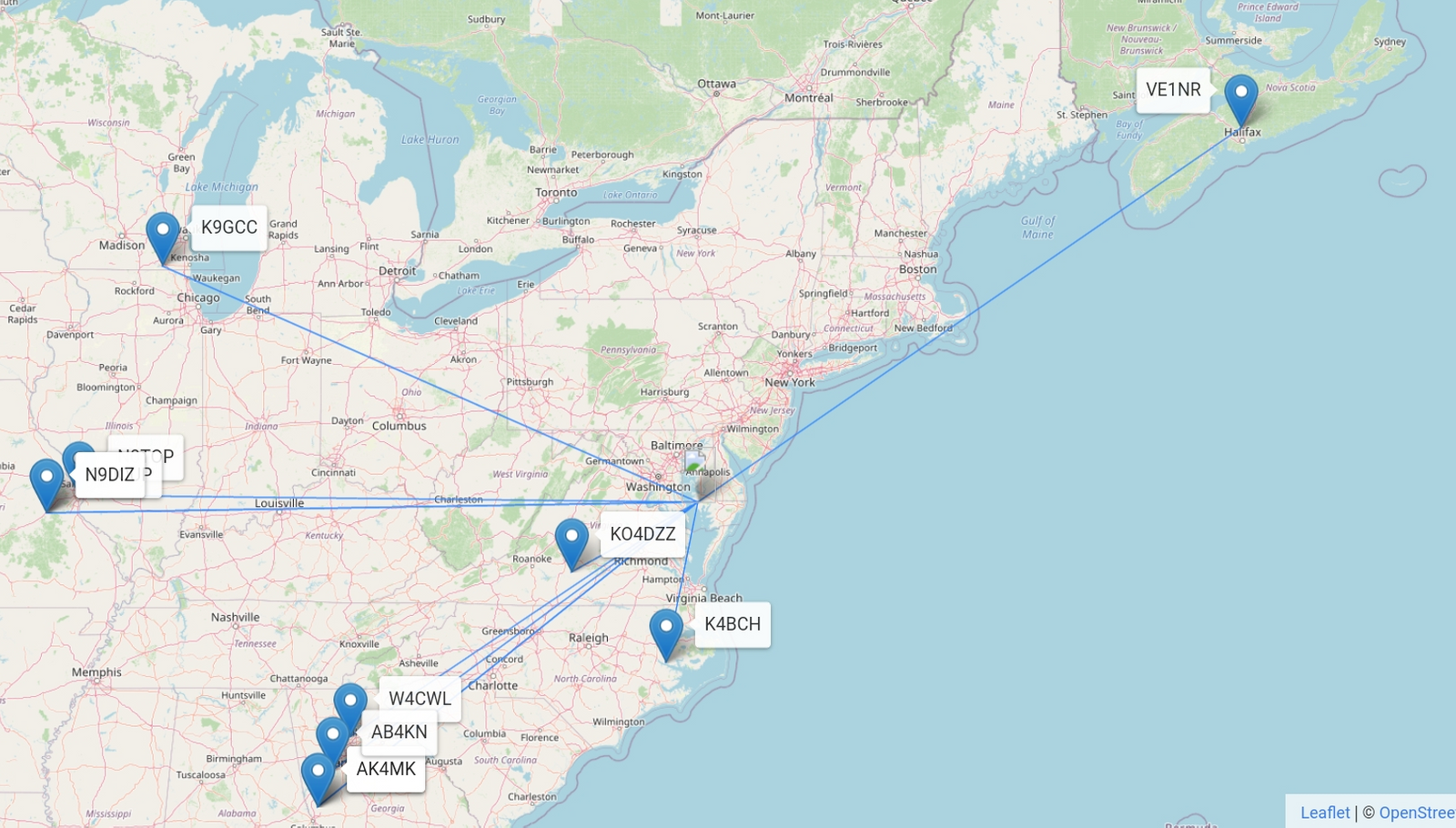
Gear used in this activation
- Icom IC-705
- Buddipole Buddistick Pro Antenna
- LDG Z100 Plus
- RigExpert Stick Pro Antenna Analyzer
- Icom LC-192
- Bioenno 12V 6Ah LiFePO4 Battery
- Sony Headphones
- Samsung Galaxy S6 Lite Tablet
- Logitech K380 Bluetooth Keyboard
- Rite in the Rain Notebook
- Zebra DelGuard Mechanical Pencil
Posted on April 24th, 2022
Morserino-32 (Version 2) Review
The Morserino is a kit sold by Willi Kraml, OE1WKL of Austria that is a morse trainer, cw keyer, iambic paddle, and an internet and RF connected morse code communications device. It retails for 88 Euros on his website at http://morserino.info and ships to the US in 1-2 weeks with free shipping. It can be used to learn the code, to increase your speed in sending and receiving, to develop the ability for "head copy", and also as a keyer for a rig that doesn't have one built-in.
The Build
The kit comes well packaged from Austria with everything you need to build it except for a battery. This is because shipping regulations for LiPo batteries can be difficult internationally. Thankfully there are many options available online, including at Amazon.com. All surface mounted components come pre-soldered to the board and all that is left for you to do is to connect the through-hole components. The assembly is relatively straightforward if you have soldered basic electronic kits in the past and the instructions are clear and guide you step-by-step. There are a few 1/8th inch jacks, a power switch, a rotary encoder, a button, a speaker, wiring to the battery you choose, and the headers for the ESP32 MCU that serves as the core of the unit. The kit also comes with an acrylic case that is laser cut and engraved with the logo and labels for the various parts of the kit. I was able to complete the kit in one evening.
The instructions recommend getting a small LiPo battery to power the unit when it is not connected to a USB power supply, I had several 18650 lithium ion batteries on hand already, so I decided to use one of those instead. The case for the kit does not support such a large battery, however, there is a large active community on the groups.io site for the Morserino, and I found a thread with a link to a 3D printable case that allowed an 18650 battery to be added and kept safely together while still providing access to all the plugs and components. After a quick print on my Prusa i3 MK3S+ in PETG, I had everything together and ready to go. With this battery I've been able to run the Morserino for several hours, never coming close to depleting the battery. The battery is easily recharged by plugging the Morserino into USB power. A picture of my build is below. The black case and teal battery and holder are my additions to the setup, everything else comes in the kit.
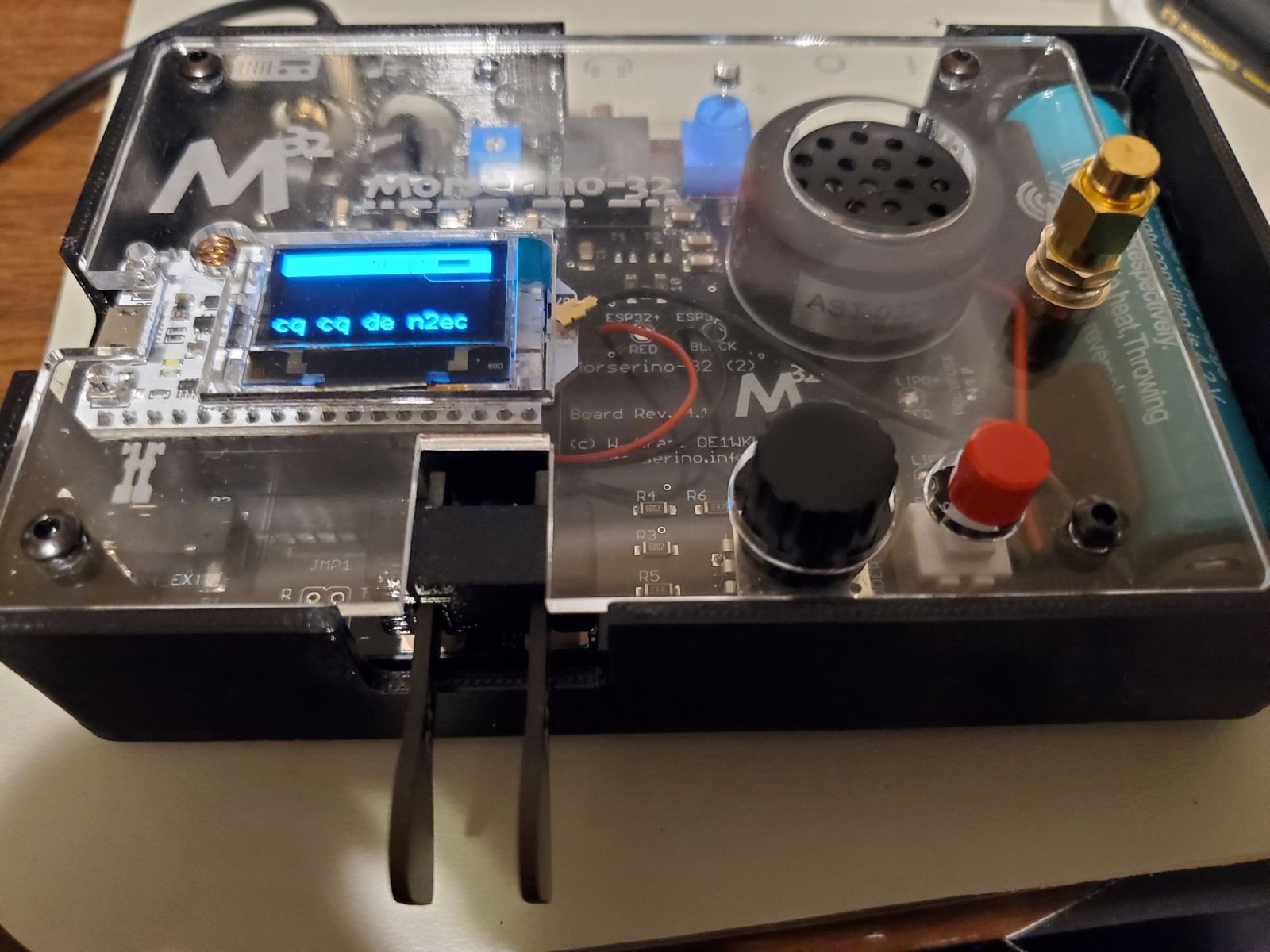
Using the Morserino
The ESP32 MCU comes pre-flashed with the latest Morserino firmware, so you're ready to go immediately after the kit is assembled. After doing a quick battery calibration with a voltmeter to make the battery graph more accurate (an optional, but recommended step), you are presented with the main menu options: CW Keyer, CW Generator, Echo Trainer, Koch Trainer, Transceiver, CW Decoder, and WiFi Functions.
The CW Keyer is very useful for sending morse code. Alone it acts as a practice oscillator, but with an appropriate 1/8th inch TRS jack you can connect it up to the key input of your HF rig and use it as an iambic keyer. I have used it for several QSOs using my Kenwood TS-440s that does not have a built-in keyer and it works great. The rotary encoder allows you to select the speed to send the code between 5 and 60 words per minute. The capacitative paddles are surprisingly good and with a bit of practice you can send quite well with a very light touch. With the key input you can also use an external iambic or straight key. I have used my CW Morse Pocket Paddle (a double paddle iambic key) with it and it works very well.
The CW Generator function generates morse code using different types of output that are played through the speaker (or headphones) and shown on the screen: Random, CW Abbreviations, English Words, Call Signs, Mixed, and a File Player. Random sends random characters. CW Abbreviations shows common terms you'll hear in a CW QSO. English words selects words randomly from a list of common English words. Call Signs gives a random list of call signs that the system makes up randomly. Mixed takes values from all the other modes and puts them together randomly. Finally, File Player allows you to upload a file to the unit to have it play a script of your choosing.
The Echo Trainer may well be my favorite feature of the Morserino. It has helped me get faster at decoding and sending morse code. Like the CW Generator, it gives the options of Random, CW Abbreviations, English Words, Call Signs, Mixed, and File Player. The difference is that when it plays you a word, phrase, or random string it does not echo it on the screen. Your task is to decode the word in your head and then use the iambic paddle (either the capacitative one in the kit or your own external key) to send it back to the Morserino. If you sent it properly, it will give you a cheerful beep and show you "OK" on the screen after the letters it decoded from your code. Otherwise you get a buzz and an "ERR" to let you know you got it wrong. After 4 errors, it shows you what the word was and it moves on to the next one. This mode has been the most helpful to me in improving my morse code. I try to spend time every day on the Echo Trainer and have seen consistent progress in my speed and accuracy. More importantly, it is fun.
There is also a Koch Trainer, which allows you to learn code from the start if you're not familiar with the letters. It uses the Koch method, starting with 1 character at full speed and going up to 50 (with punctuation and prosigns). Within the trainer there is a CW Generator, Echo Trainer, and a Learn New Character function to learn the new character for that lesson. When you get proficient with the current lesson, you move up to the next, until you've learned them all.
The Transceiver function allows you to send code using the built-in LoRa radio to another Morserino unit. With line of sight, LoRa can go a few kilometers, or even more (there are LoRa satellites that operate in the same low power). One thing of note though, this kit uses the 433 MHz band which is an ISM band in Europe, but not here in the US. As long as you are licensed and ID with your call sign, you can probably use it legally, but not otherwise. The most recent version of the kits come with a dummy load to attach to the antenna connector, which I have connected to it since I don't have any other units to connect with. The Morserino also supports connecting to the internet over WiFi and there are chat rooms and QSO bots you can connect to if you're so inclined.
The CW Decoder works to decode morse from a straight key or from the audio output of a radio. Getting things dialed-in for the radio part can be challenging, but if you get the sidetone to 700 Hz and have a low enough noise floor, decoding is possible.
Finally, the WiFi Functions menu allows you to find the MAC address for the unit as well as configure your device to connect to your WiFi access point. To get on your network, it first makes its own network you can connect to to type in the SSID and password into a web page. It reboots and is then able to connect. That same page also allows you to specify the address of any chat server or bot site you want to connect to via WiFi. The WiFi Functions menu also gives you the ability to upload files for the CW Generator and to update the firmware over WiFi as well.
The Morserino has been a great tool for improving my morse code skills. I look forward to sitting down to practice every day and have been seeing steady improvement in my sending and receiving. Since building and practicing with the kit I've even gotten on the air and had a few check-ins to MVARC's weekend Slow Speed Rountdable and logged QSOs with several POTA operators in parks around the country. My goal is to be able to activate a park with POTA using nothing but CW (so far all my activations have been with SSB). If you enjoy building kits and want to improve your morse code skills, I recommend the Morserino. It is fun to build and fun to use.
Posted on April 19th, 2022
POTA Activation #9 - George Washington Memorial Parkway / Captain John Smith Chesapeake National Historic Trail (VA) (4/17/2022)
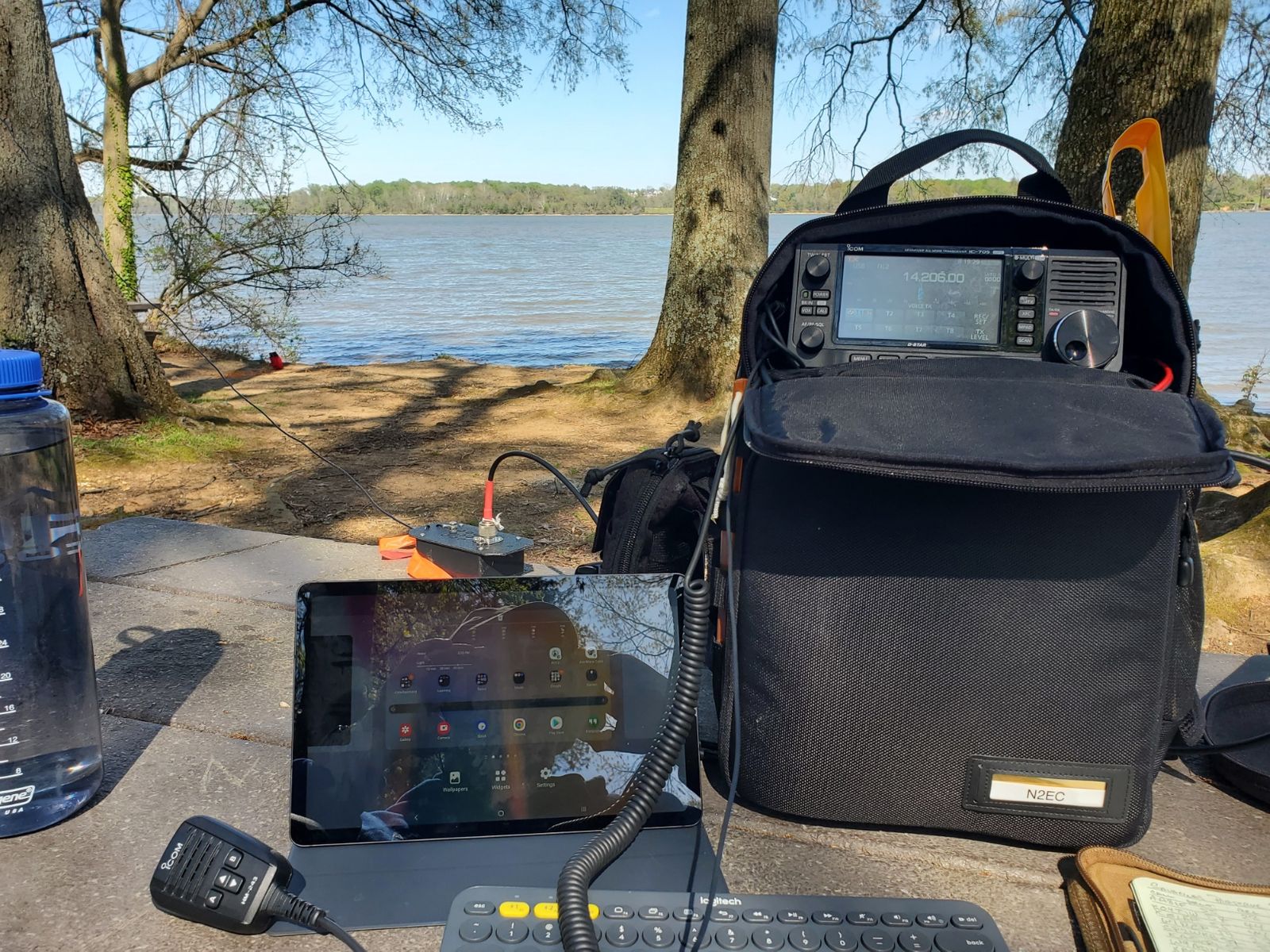
The weekend of April 16-17, 2022 was the second Support Your Parks event for 2022. On Sunday the 17th I had some time to get over to the George Washington Memorial Parkway for an activation. I have been doing a bit of research to find interesting parks to activate near my QTH and I found that there are a lot of opportunities to activate multiple parks simultaneously.
Actually, I've already done it without knowing it, but since I only submitted the logs for the single park, those earlier ones didn't count. In addition to the parks that you think of when you think of a park, there are also a lot of National Historic Trails that go through those parks. One of particular note is the Captain John Smith Chesapeake National Historic Trail. It isn't a trail you can walk on, as it is on the water! A good part of the Chesapeake Bay is covered by the CJSCNHT including the tidal Potomac River, which runs through the DC area. In order for a National Historic Trail to be activated, you must activate within 100 feet of the trail. Conveniently, the George Washington Memorial Parkway has several park areas that are right on the water.
For today's activation I was initially planning on going back to Riverside Park inside the GW Parkway, but all the parking spots were taken as were all the picnic tables in good operating positions. I kept on driving and remembered that there was a Collingwood Picnic Area that I had driven past hundreds of times, but never explored. Today was the day.
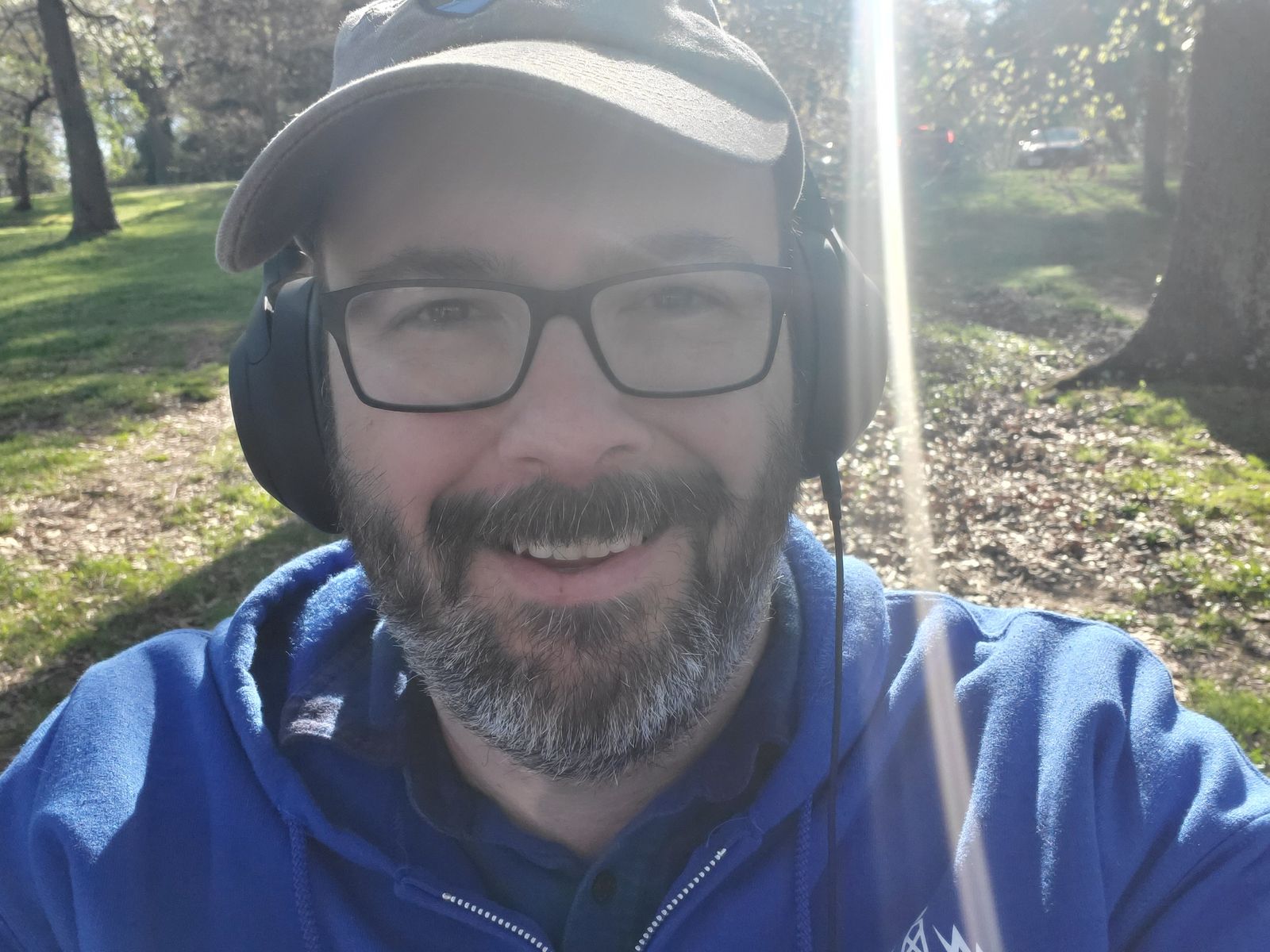
There were still a few parking spots left and a few open picnic tables with a great view of the waterfront. I grabbed one near a beautiful tall tree and decided to pull out the MFJ 1984 MP so that I could hop between bands more easily and get a bit more time on the air with it. I used my arborist throw line kit and after a couple attempts was able to get my line over a high branch and then pulled the antenna up and over in a sharply inverted-v setup. I tied the line off to another picnic table that had a broken (and unusable) seat with a couple of half hitches and conveniently the angle was steep enough that I didn't have to worry about anyone walking into the lines. A couple was enjoying the day listening to smooth jazz by the water, but with my headphones I was able to not be bothered by it. I just enjoyed the views across the Potomac and into Maryland.
I hooked up the antenna to my Icom IC-705 and when I turned it on it was on 20m, so I figured I'd start there. Unfortunately, even though the band was awash in POTA activators and other activity, I only managed to make one contact on the band with a station in Arkansas. He gave me a 57 signal report, so clearly I was getting out to Arkansas, but after several minutes of shouting into the void, I decided to seek refuge on 40m.
After a slow start, the contacts started coming in. Initially I seemed to have a pipeline into NJ, getting 3 contacts from there in a row. Then came Ohio, New York, Virginia, Maryland, and West Virginia. North Carolina, Massachusetts, and Pennsylvania. All in all I had a good run and as things started to slow down, I decided to get in a bit of hunting. After I worked the spots on 40 that could hear me I remembered my contacts on the higher bands down in Florida and decided to use that easy frequency agility of the end-fed halfwave teamed with the antenna tuner and give 17m a try.
I called CQ and all was quiet for a bit, but then I got a call back from F4ILH in France who had a great 57 signal into the park and gave me a respectable 52 for my 10 W into a wire from across the pond. I had a big dumb grin after getting transatlantic dx on my low-power setup once again and gave Jean Baptiste a merci beaucoup for the contact and a warm 73. That would be my only contact on 17m. Looking at the spots I saw there was some activity on 15m, so I went in and hunted WX5KR in Texas and got another Park to Park in the logs. I gave 12m and 10m a try, but didn't get any takers, although I did hear some interesting dx on 10m.
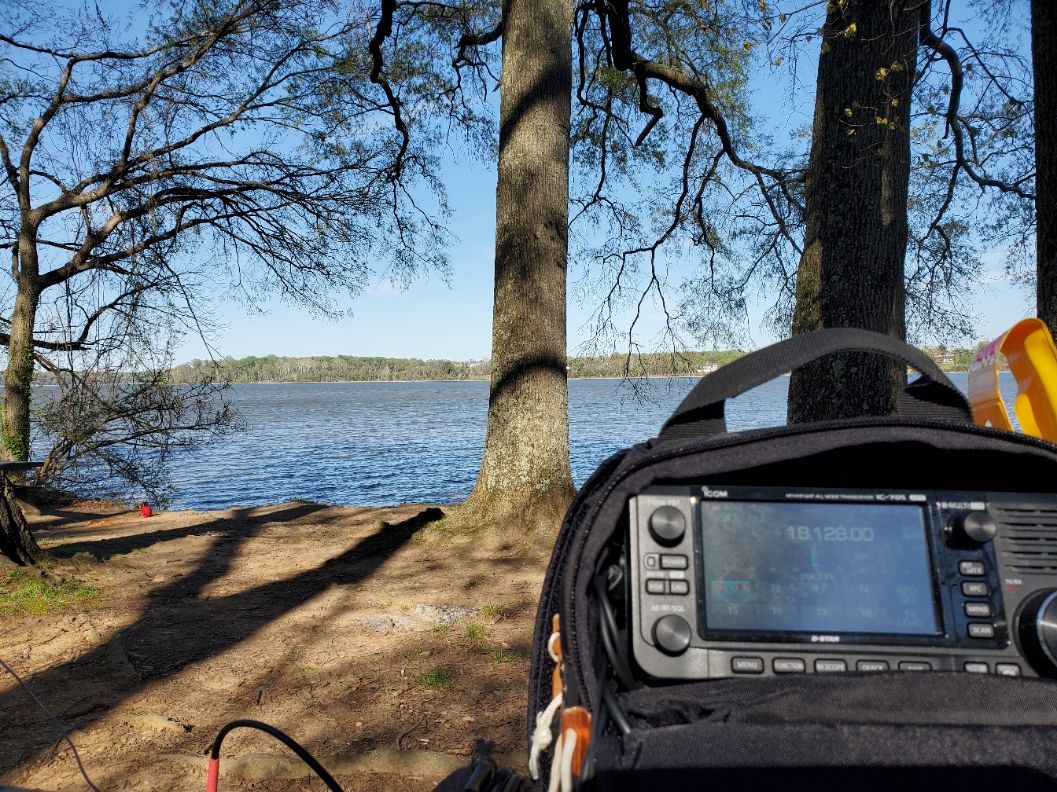
I looked at the clock and saw that it had been about 45 minutes since I had hopped off 40m and decided I would give it another go before wrapping up the activation. After a quick self spot I got a call from Richmond, VA with the great call sign of K9RVA. North Carolina, Ohio, Pennsylvania, New Hampshire, Virginia, Michigan, Maryland, Arkansas, New Jersey, New York, and Ontario, Canada followed. I got a Park to Park call by frequent activator W3LOU and thanked him for the numerous times I've had the pleasure of hunting him and gave thanks for him hunting me. After one last call from Ontario, I decided to call it an activation with 45 entries in the log.
This was definitely a fun one, and I'm glad I got to explore a new area of one of my favorite parks nearby. It was also fun getting my first twofer on the books. There are a lot of opportunities near me for multiple simultaneous parks -- I even found one that may be 4 or 5 parks, depending on park boundaries. I can't wait to keep exploring and playing radio outside.
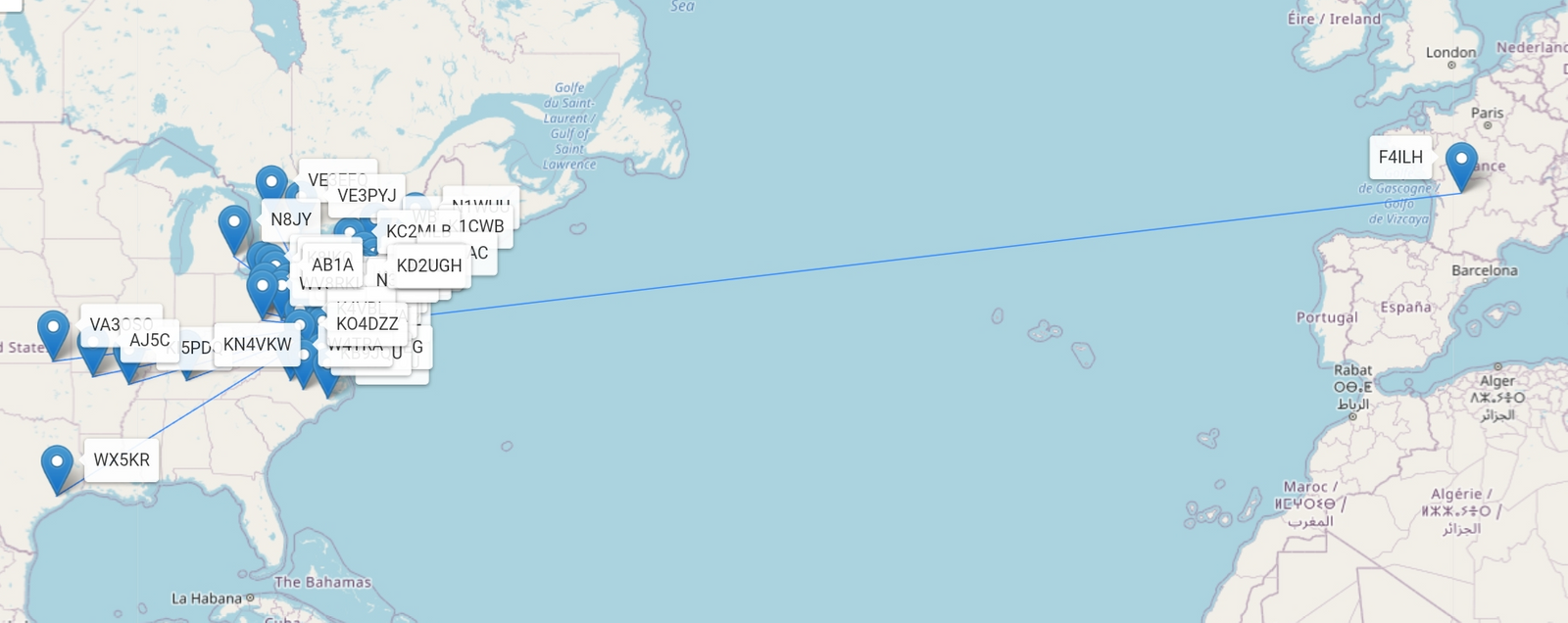
Gear used in this activation
- Icom IC-705
- MFJ 1984 MP
- LDG Z100 Plus
- RigExpert Stick Pro Antenna Analyzer
- Icom LC-192
- Jackery Explorer 500
- Sony Headphones
- Samsung Galaxy S6 Lite Tablet
- Logitech K380 Bluetooth Keyboard
- Rite in the Rain Notebook
- Zebra DelGuard Mechanical Pencil
Posted on April 17th, 2022
POTA Activation #8 - Savannas Preserve State Park (FL) (4/5/2022)
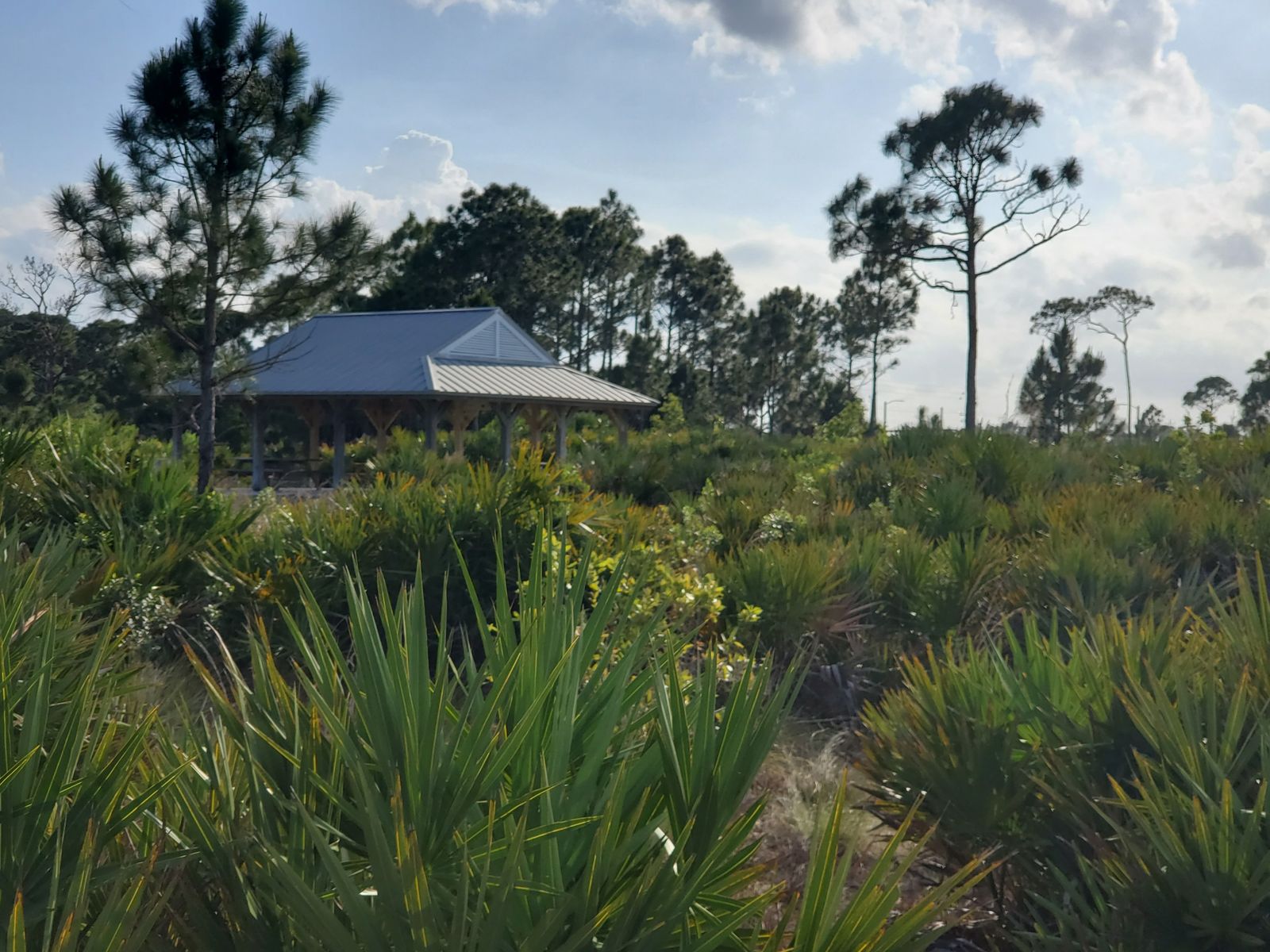
After the challenges of yesterday's activation, I decided to look at the HF propagation forecasts when a bit of time became available to play radio today. Things looked good for 20m and up, so I took all my gear back to Savannas Preserve State Park for a second POTA activation. I thought everything was going to be smooth sailing, but as John Lennon once said, "Life is what happens to you when you're busy making other plans".
This time I was able to get into the South entrance to the park that was closer to where I was staying. There were more people in this part of the park, including a group of what appeared to be Americorps volunteers having a meeting in the pavillion as well as some high school running clubs making circuits in the park. The skies were sunny and the temperatures firmly in the 80s with a substantial breeze. The view was similarly stunning with a wide expanse of Florida savannah laid out before me.
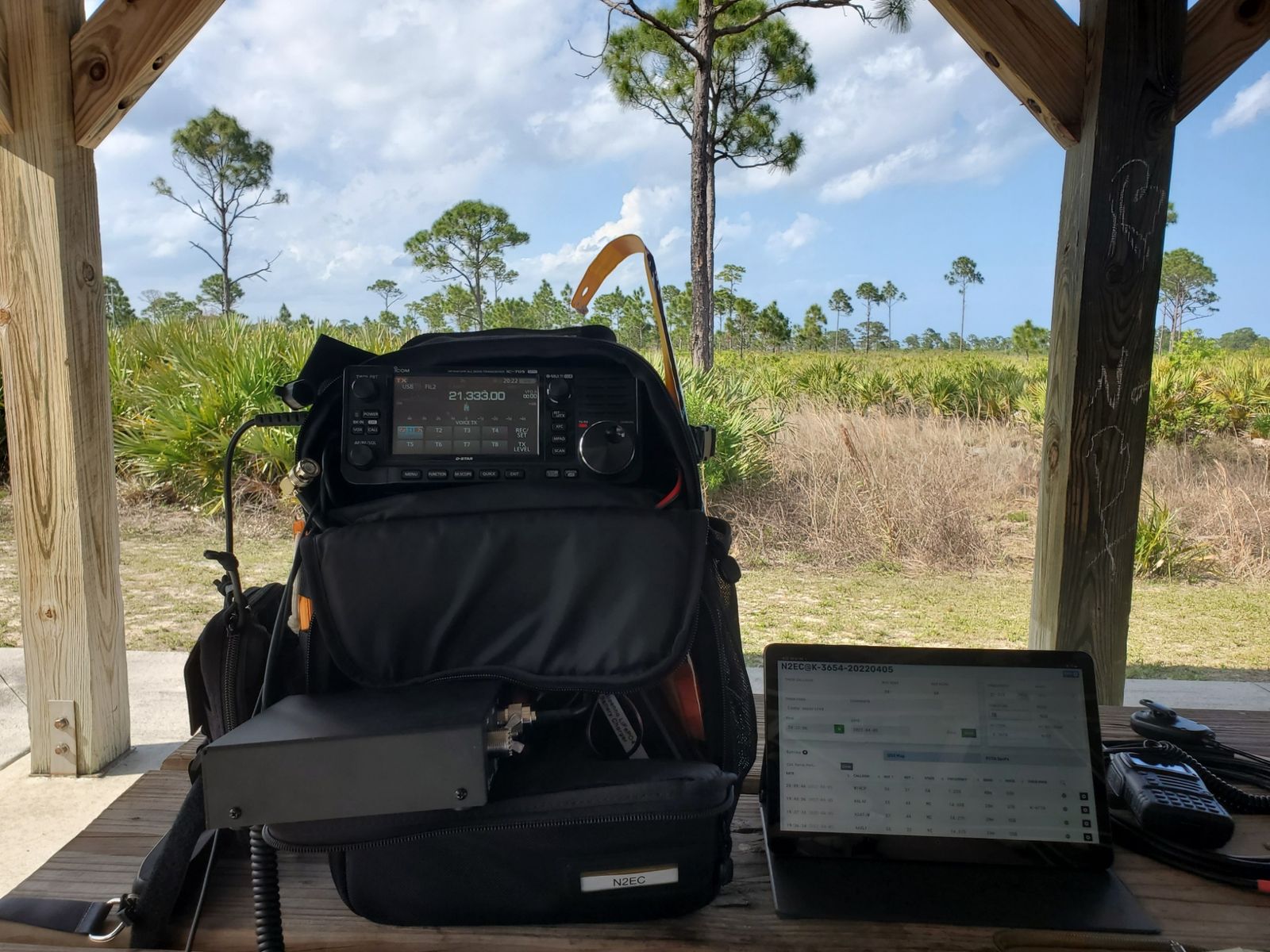
Once again I decided to use the Buddipole Buddistick Pro as there were not many great options when it came to trees. I set up camp on 20m and started calling CQ, but nobody seemed to be hearing me, even with a self spot. I noticed my antenna tuner wasn't showing up in the settings of the IC-705 as working and my SWR was a bit high, so it appears that the batteries on my LDG Z-100 Plus died on me. Not building the powerpole cable for the unit before I left on my trip definitely came to haunt me. Thankfully, the Buddistick Pro is a resonant antenna and is somewhat tunable by changing the length of the radial. So I dialed-in my antenna with my RigExpert Stick Pro a bit to get the sweet-spot closer to my operating position and I made a couple contacts. Unfortunately, those would be few and far between.
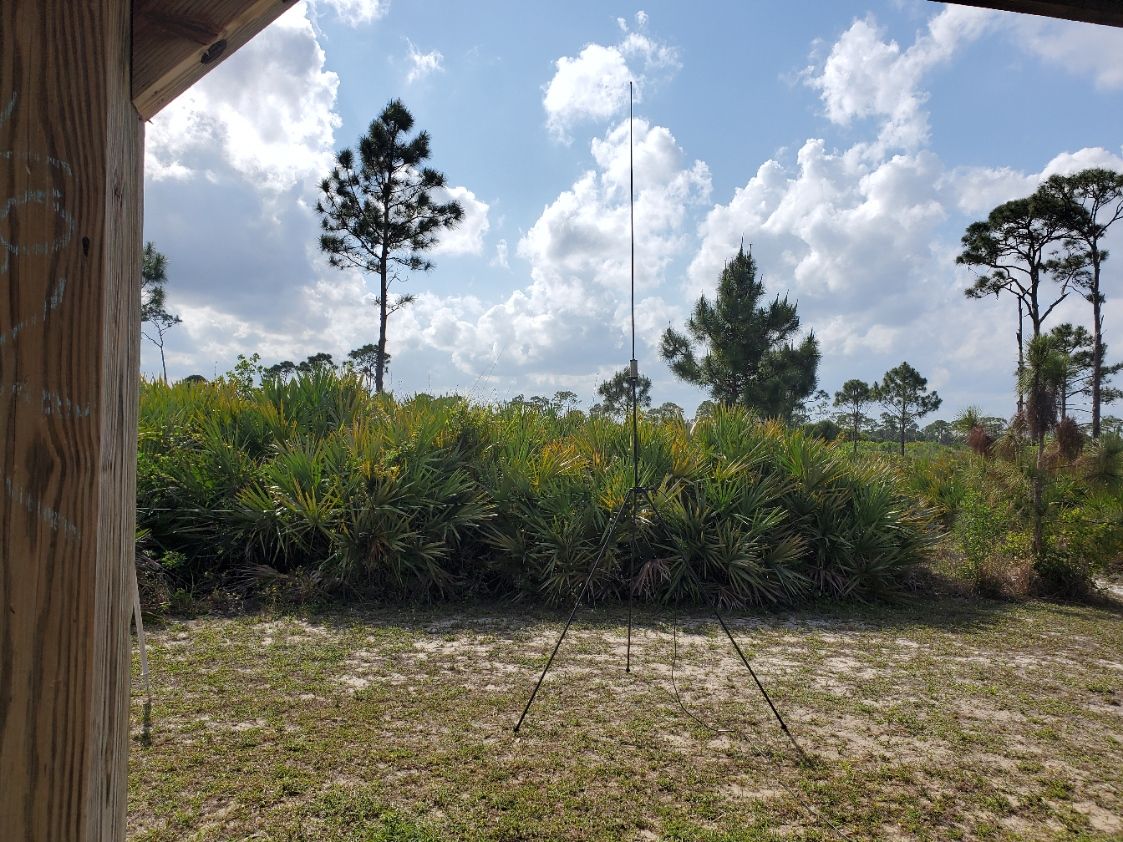
My first two contacts were from Michigan and North Carolina, but they were reporting my signal down at a 22 and 44 respectively. Not good. After a bit more shouting in the dark, I decided to see if I could hunt another park and I was able to reach K0LAF over in Missouri at Wilson's Creek National Battlefield, and he too was reporting me at 44. I tried changing bands to 40m and got one response from Georgia with a 27 signal report. From there I decided to give 15m a try. I called CQ for a while but got no takers, however, I did make a contact with a station in Poland who gave me an impressive 57 signal report. There were a couple other stations ragchewing on 15, and I even heard a conversation between a station in Portugal and one in Venezuela, but the Venezuela station who had been calling CQ could not hear me.
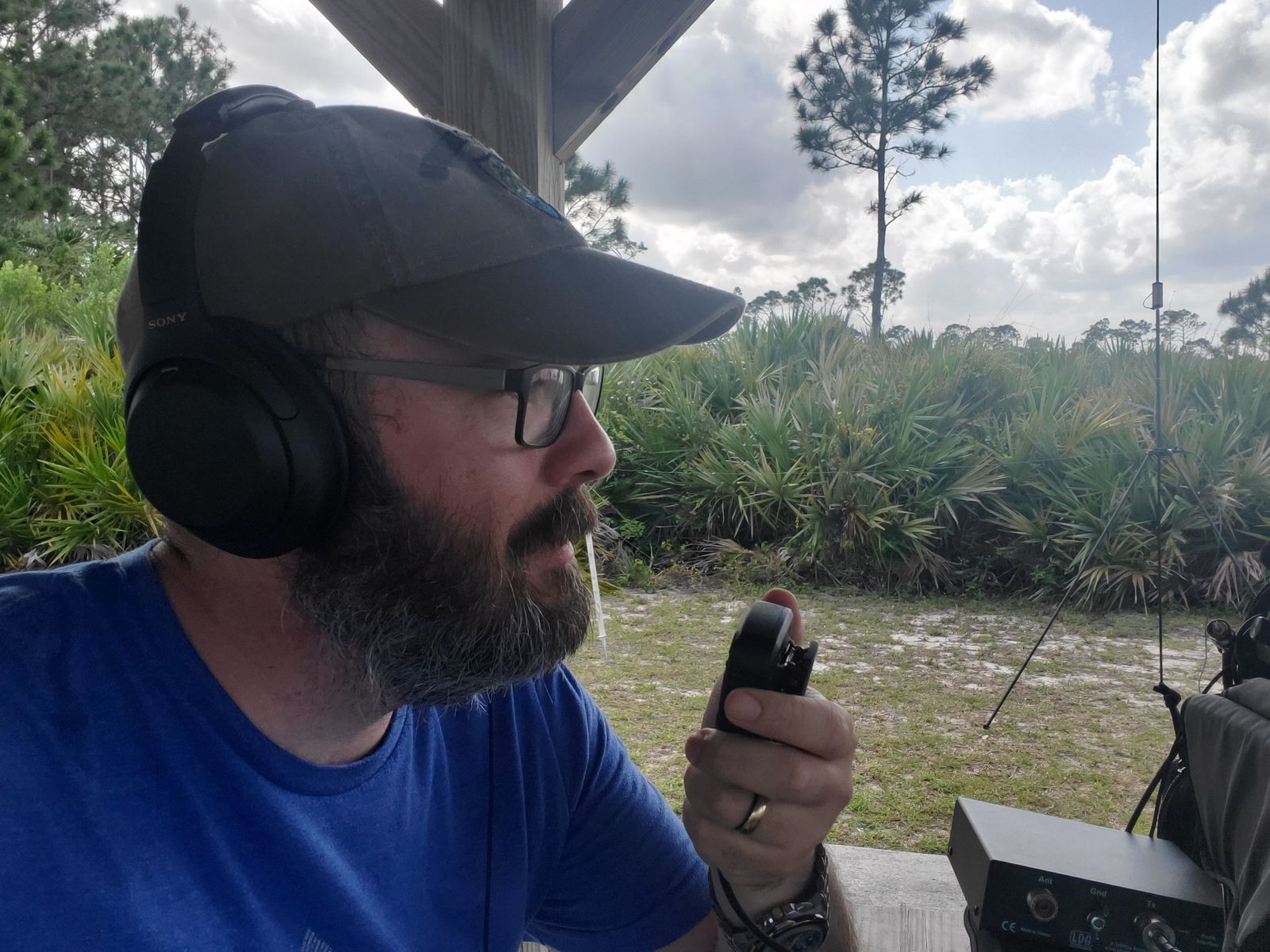
I was beginning to think that this might be my first incomplete activation. As I was looking at the spots, I noticed that activity had picked up on the 20m band, so I lengthened my radial again and re-tapped my coil and was back on the band and decided to hunt my way into a completed activation. It was a challenge with my 10 watt station that was mysteriously quiet. I was able to work KA5CRL in Texas (he heard me as a 35), W9ADN in Illinois (a 44), KE8ONI in Ohio, N3AML in Maryland (44), and I got a two-fer from two stations in Arkansas (for 4 contacts). When the dust settled I had 13 entries in the log and a valid activation after about an hour and a half. In the end there were 13 contacts from stations in MI, NC, MO, GA, TX, IL, OH, MD, AR, and the long distance winner of Poland!
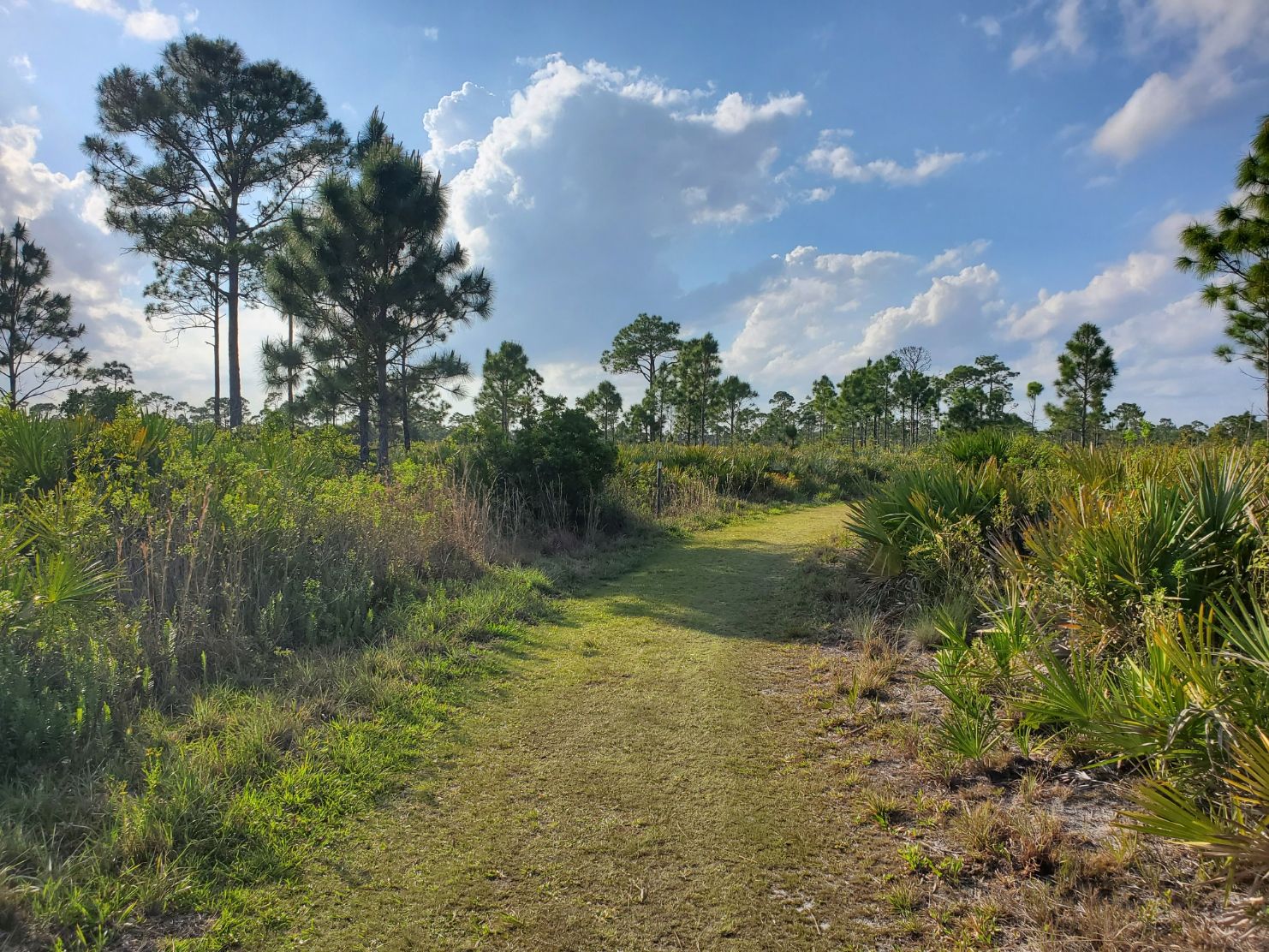
After breaking down my station I went for a quick walk into the park on the soft well manicured trail. It was nice to be able to get closer to the scenery I had been soaking in for the last hour and a half. The scenery was dramatic with the contrast between the lush and dense vegetation and the boundless blue and white skies that seemed larger due to the absence of buildings in the viewshed.
This was definitely one of my more challenging activations. I am glad I was able to stick in there and have it be a successful attempt.
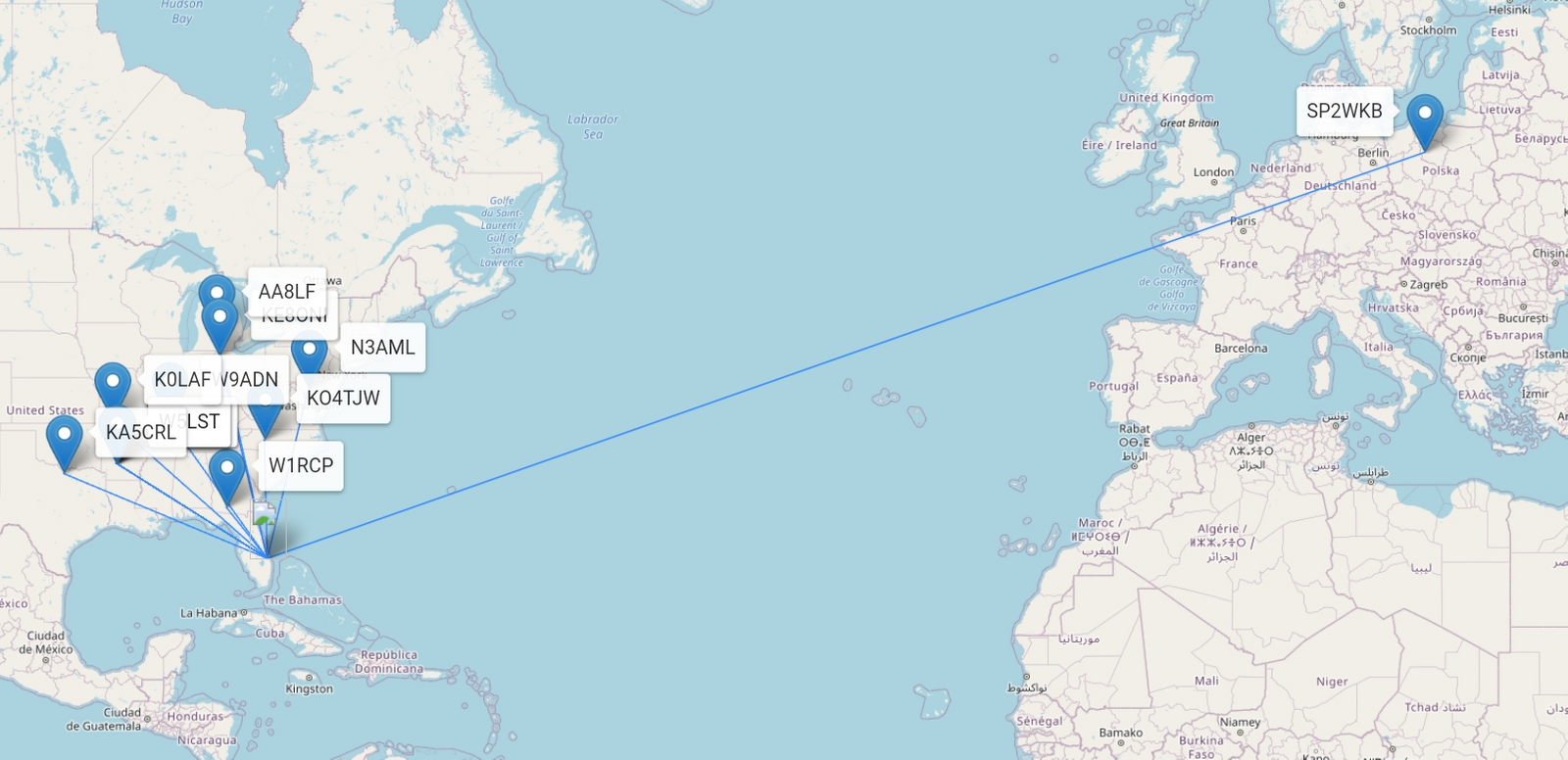
Gear used in this activation
- Icom IC-705
- Buddipole Buddistick Pro Antenna
- LDG Z100 Plus (until the batteries died)
- RigExpert Stick Pro Antenna Analyzer
- Icom LC-192
- Bioenno 12V 6Ah LiFePO4 Battery
- Sony Headphones
- Samsung Galaxy S6 Lite Tablet
- Logitech K380 Bluetooth Keyboard
- Rite in the Rain Notebook
- Zebra DelGuard Mechanical Pencil
Posted on April 5th, 2022
POTA Activation #7 - Savannas Preserve State Park (FL) (4/4/2022)
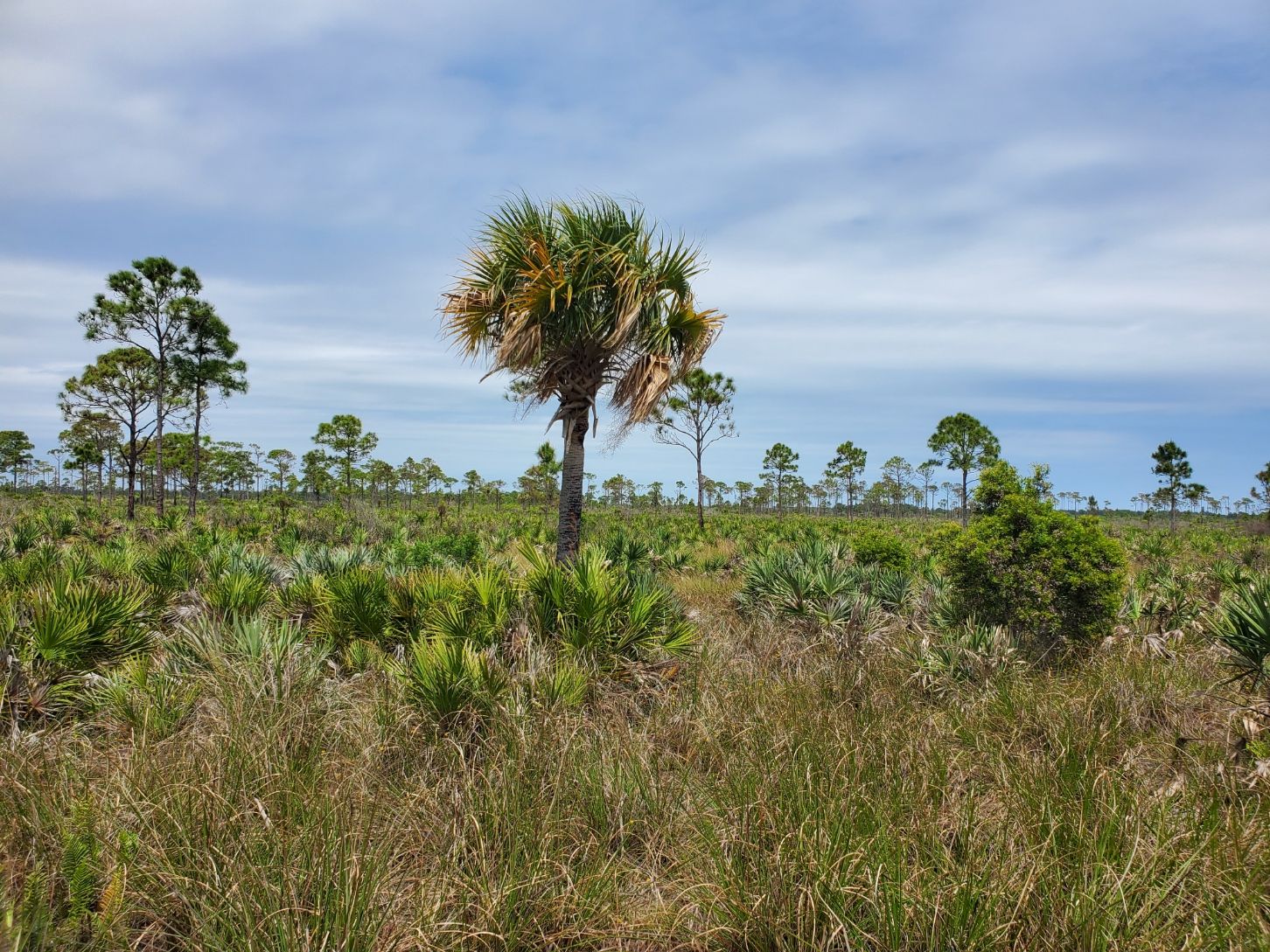
The week of April 4 coincides with my daughter's Spring Break. As is our custom, we made the long drive down to the Treasure Coast of Florida to visit my father-in-law in Stuart, FL. In my POTA hunting, the overwhelming majority of my contacts from a particular state reference have been from Florida. So, knowing I would be in the area for a week, I decided to bring my POTA setup with me to try to get an activation in while on our vacation. Monday morning (the 4th) looked like a great time as my daughter was enjoying the pool at our VRBO and my wife was enjoying some downtime reading a book. So I found a park that was just 5 minutes away, Savannas Preserve State Park, K-3635.
I set the GPS on my phone and was there in a flash -- but there was a problem -- the gate was closed. Time for plan B. I decided to take the road that goes around the perimeter of the park, but surprisingly, there were not many other entrances to it. While taking the grand tour, it was clear this park was an ecological haven ... now I had to figure out how to get in. After calling my wife for some help while I was driving, she found another entrance near the midpoint of the park and guided me there. Success!
There was a kiosk requesting a $3 fee on the honor system, so I got out of the car, filled the envelope with $3, and then put the hang tag on my rear view. Immediately in view of the entrance there was a visitor's center that appeared to be closed along with a nicely shaded picnic pavilion. I was the only person there. So I decided to set up camp in a shady spot under the pavilion overlooking the park.
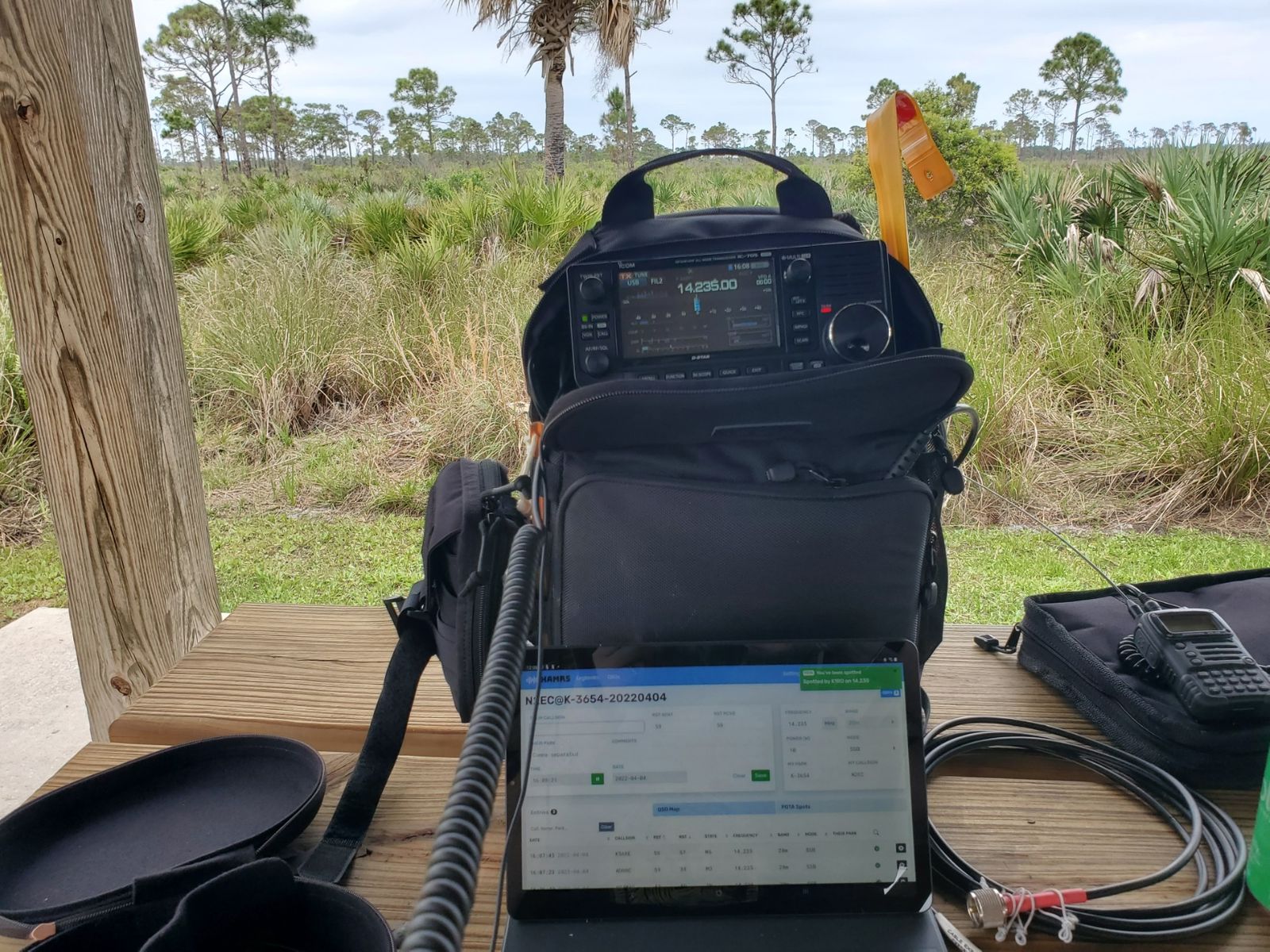
Savannas Preserve State Park is a 10 mile strip of land just off the coast of the Indian River. It consists of freshwater prairies and savannas behind a bank of dunes. After circumnavigating the park in my attempts to find an open entrance, I quickly realized just how big this park is. Even right off the road, it quickly feels like you are in another world, apart from the suburban sprawl mere meters away.
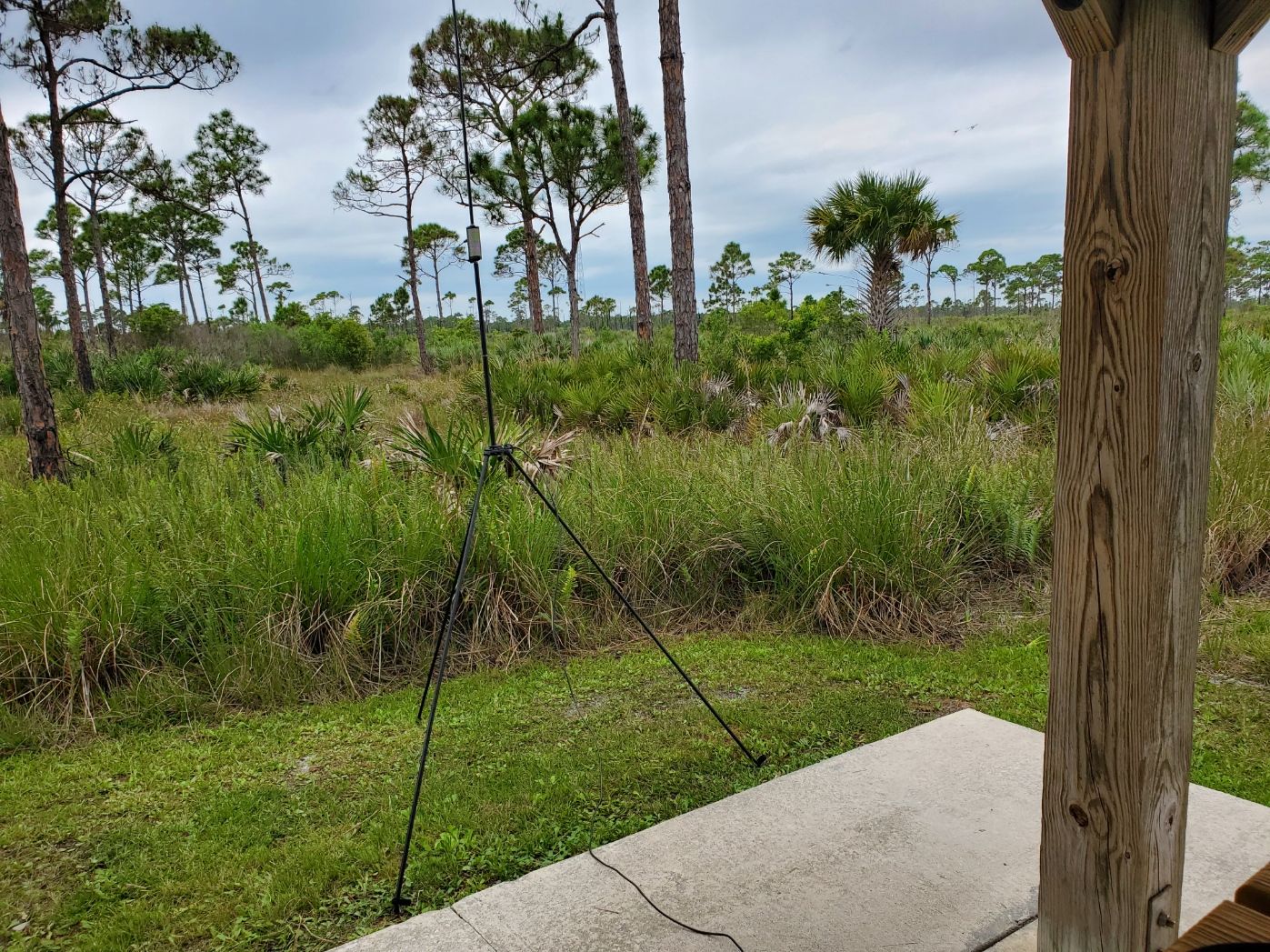
I decided to use my Buddipole Buddistick Pro so that I would not have to get into the brush to get my end-fed half-wave up in a tree. I was able to get it up in a couple minutes and tuned to 20m in another minute or so. It took a few minutes to find a good clear spot on the band, and I set up camp on 14.235 MHz, spotted myself on the POTA site and started getting some QSOs in the log. Propagation wasn't the best, but I was able to get 14 contacts from TN, MO, MS, NY, IN, RI, NJ, and the Dominican Republic (one was a twofer Park to Park) in about 30 minutes on the air.
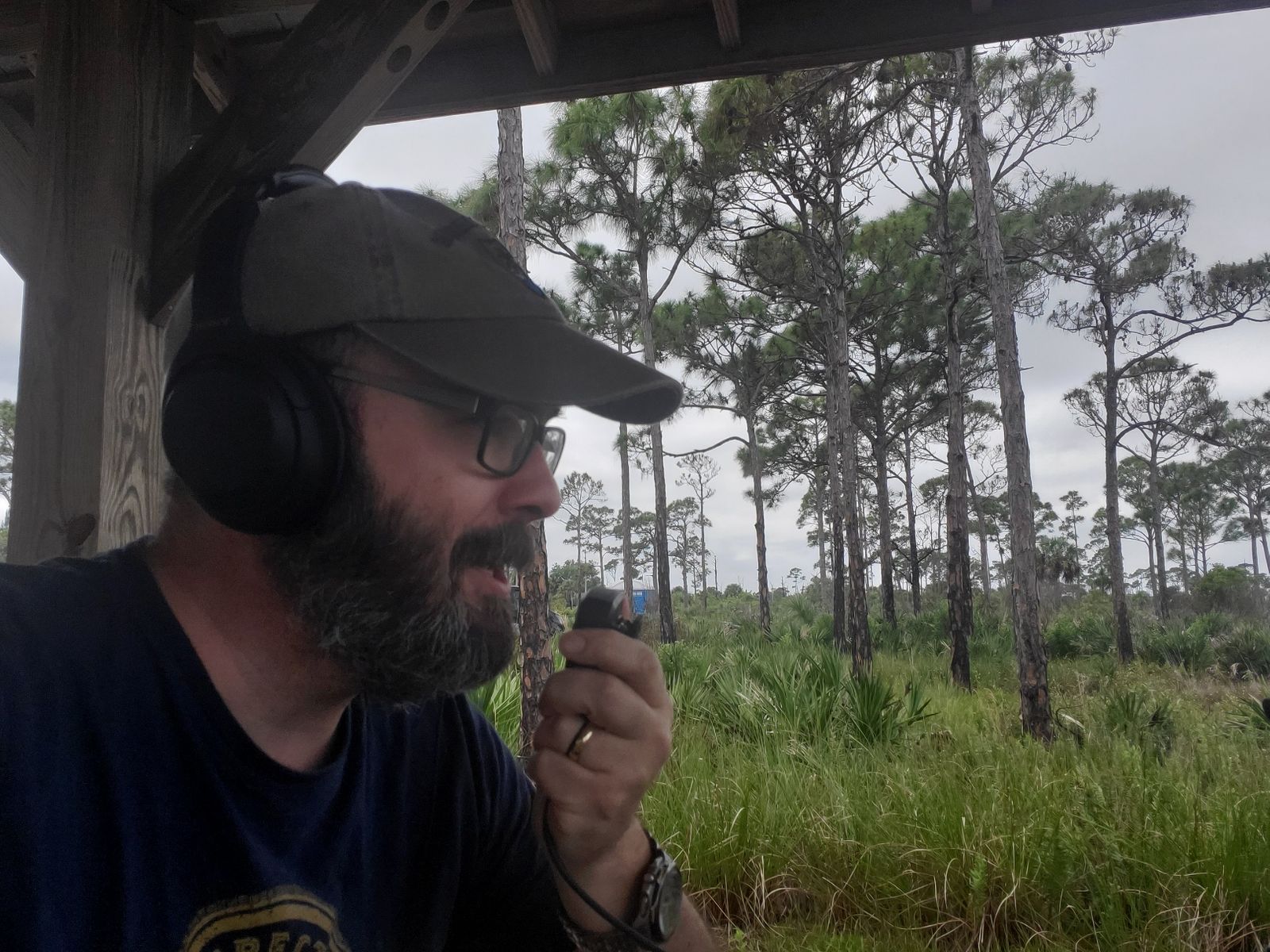
After an initial burst of contacts, things died down a bit, so I tried some hunting. Unfortunately, while I could hear stations as far away as Nevada, they could not hear me. The perils of running 10 Watts. I decided to go to my old standby of 40m, but it was as dead as can be. I did hear one pair of older gentlemen ragchewing on the band (presumably local), but my calls of CQ went unanswered despite self-spotting, and having made my activation, I decided to call it a day and to join my family for lunch.
All-in-all it was a fun and quick activation. The spot I setup at is hard to beat with a shaded picnic table with a gorgeous view. I practically had the place to myself, save a handful of hikers passing through. I would love to spend some more time hiking through the park when I have more free time.
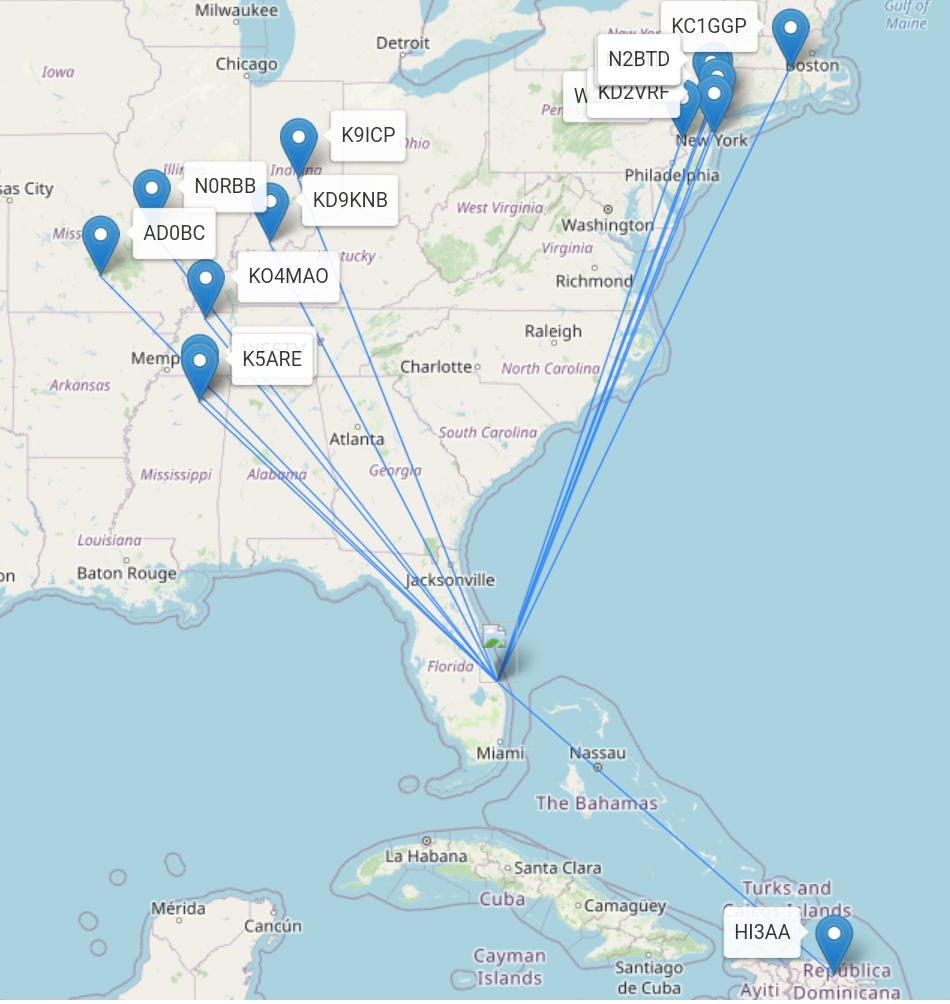
Gear used in this activation
- Icom IC-705
- Buddipole Buddistick Pro Antenna
- LDG Z100 Plus
- RigExpert Stick Pro Antenna Analyzer
- Icom LC-192
- Bioenno 12V 6Ah LiFePO4 Battery
- Sony Headphones
- Samsung Galaxy S6 Lite Tablet
- Logitech K380 Bluetooth Keyboard
- Rite in the Rain Notebook
- Zebra DelGuard Mechanical Pencil
Posted on April 4th, 2022
POTA Activation #6 - Prince William Forest Park (VA) (3/19/2022)
When Gersohn, KO4IUK, and I met up at the George Washington Memorial Parkway to operate alongside each other for my 5th activation, we had a lot of fun. At the time, Gersohn was new to POTA, so he was just operating outside as he likes to do. However, when he saw the pile-ups I was working, even though I was running a tenth the power he was, he got a taste of the magic of POTA and was intrigued.
One of the things that makes POTA a bit magical is that you become the DX. What I mean by that is that with the very active community of hunters, you've got a lot of people who want to work activators in the parks. POTA actively encourages self-spotting (announcing on their site that you're activating on a certain mode and frequency) so even if you're operating a fairly modest station, people will know where you're at and will work hard to find you. If you can't spot yourself, hunters will frequently do it for you if they find you, so once you have one contact, more are likely to follow. The developers at the POTA site have even connected up with the Reverse Beacon Network to support automatic spotting if you're working CW or FT8. Yet another reason why I'm working on improving my Morse code skills.
We had two goals for this activation. First and foremost was to get Gersohn started in POTA and get his first activation in the books. Second, I was out to try a new bit of gear. The Icom IC-705 has a built in (removable) battery pack that allows operation at 5W, however, if you supply it with a 12V external supply, it can transmit at up to 10W. Since I'm working primarily SSB (until I get better at CW) I can use all the power I can get, so I have been using my Jackery Explorer 500 battery pack. For this purpose, it certainly works, but it is akin to killing a gnat with a sledgehammer -- my longest activations have not even gotten the battery percentage remaining below 97%. I could run the radio on that system for days -- and if I connect the solar power system I have for it, I could operate indefinitely. There is one downside to all this, of course: It is quite large and heavy. Thus far most of the places I've been activating have been near parking areas and a short hike, so this has not been a problem. In the future though, I'd like to activate more remote locations. To that end, I picked up a Bioenno LiFePO4 12V 6Ah battery pack that is so compact it can fit inside the backpack I use to store my radio, antenna, antenna tuner, tablet, keyboard, and logs. So, with a fully charged battery (and a backup plan in the trunk) I set my goal to make my activation from just the backpack itself. Just as I would do for a remote location.
I picked up Gersohn from his QTH in Alexandria and we made our way down to Prince William Forest Park. The park is a hidden gem in the Washington, DC area near Quantico. It is easily accessible off Interstate 95, but it never seems to be very busy. I've been going to this park since I was a kid going on hikes there with my mom. The park used to be a part of the adjacent Quantico Marine Base and has miles and miles of trails through the forest and along Quantico creek. There is a verdant forest throughout the park with a wide variety of trees, rolling hills, sparkling streams, and even a few cascades to enjoy. There is a loop road that goes around the park and has stops at parking areas providing access to trailheads. Hikes go from short loops to more extensive routes that can give a decent workout. This park is a favorite for me and my daughter -- we often come here for a hike and to make some camp meals outside in all four seasons.
During my last trip hiking with my daughter (just a few weeks ago in February) I did some scouting for some good spots to setup. The most promising one was at parking lot E which has a few picnic tables amongst the trees in a clearing near, but not on top of, a trailhead near a high point in the park. When Gersohn and I drove up, we were disappointed to see that there was no parking to be had at Lot E, so we had to fall back to the other site. On the opposite side of the ring road was Lot H which has a smaller lot, but being on the far side, it is less popular. There is a single picnic table nestled between the trees on a knoll just a feet off the lot and we were able to park and get setup at the table. Once again, we decided to operate in parallel, taking turns on different bands. Since I was doing my "one backpack challenge" I decided to use the MFJ 1984 MP end-fed half wave, so I got out my arborist throwline kit and after a few attempts got a good high line into a tree a few feet away from the picnic table. I easily pulled up the antenna and tied it off using the slick line to a log and connected up my radio setup. Gersohn used his Alpha Antenna Vertical in a clearing in the trees and we were off and running.
I started on good old 40m at 7.280. This weekend happened to coincide with the Virginia QSO party. We had a hard time finding a good spot to operate. Thankfully after some scanning around and looking at the waterfall display on the 705 I found a slot at 7.280 MHz and was able to self-spot and we were off to the races. I had a bunch of contacts come in rapid succession including a couple Park to Park contacts. Then there was a QSO party contester that presumably could not hear me that started operating over my calls. It took me a while to find a new slot, but I went to 7.225 and was back up and rolling again, making a bunch of contacts and a few Park to Parks (including a twofer -- one person that was in two parks simultaneously). Eventually, I had another station start operating over me, so I took a break to stretch my legs and see how Gersohn was doing. He had made a few contacts and moved down to 40 to see if he could get some of the contacts down there. I moved up to 20 briefly, but it was packed, so I decided to do a bit of hunting and made my first contact on 12m at 24.944 with the K7G special event station Park to Park in Wisconsin and then followed them when they went to 17m at 18.150 for another Park to Park. Then I shut down my station and pulled out my tablet to check the spots to help Gersohn do some hunting to rack up a few Park to Parks. Finally we did a 2m Park to Park contact between the two of us for fun and called it an activation.
All told I ended up with 39 QSOs for the activation from VA, PA, NY, OH, CT, NC, SC, LA, WY, and Ontario, Canada and 11 Park to Park contacts. I had a lot of fun on a beautiful day playing radio with Gersohn. Can't wait to do it again.
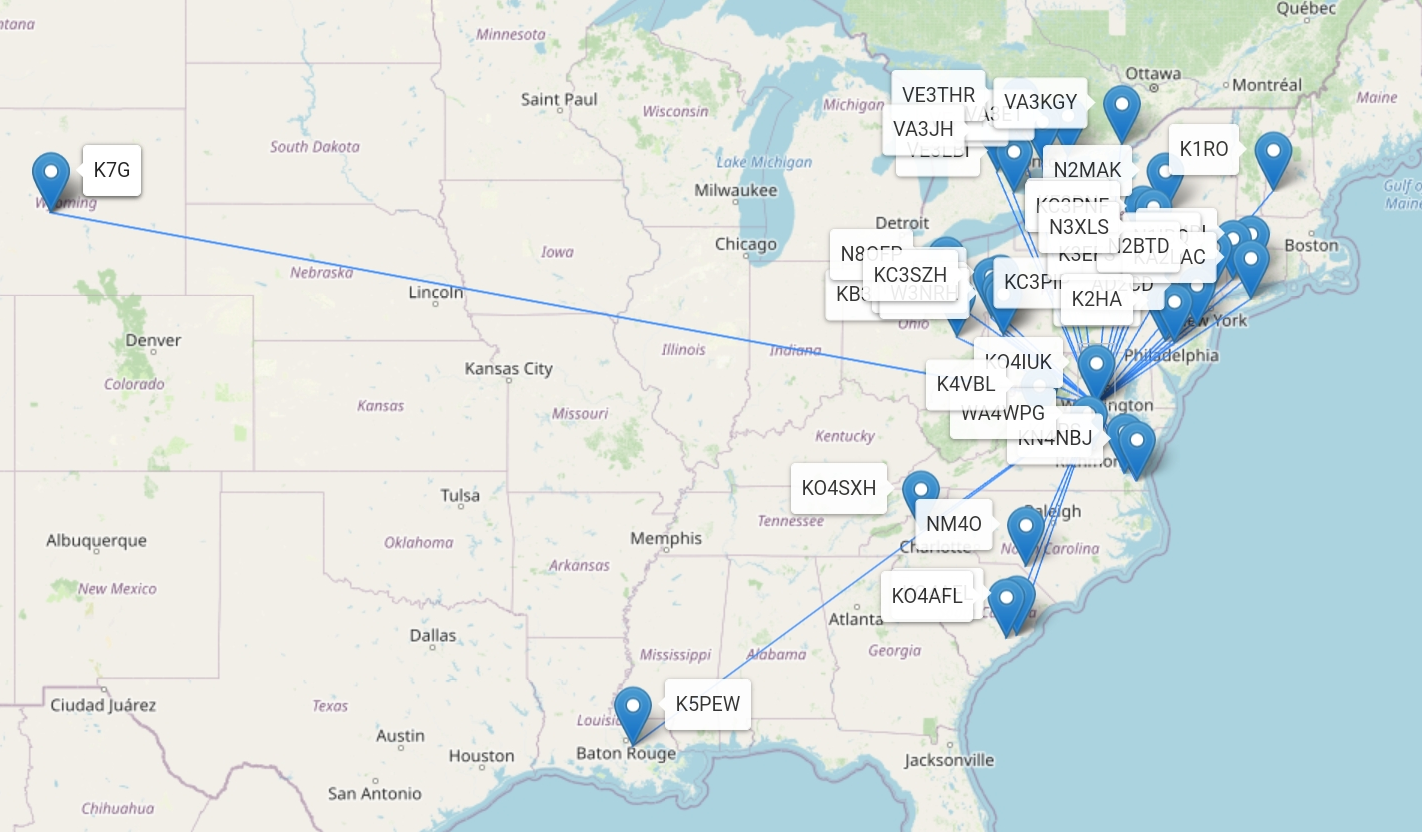
Gear used in this activation
- Icom IC-705
- MFJ 1984 MP Antenna
- LDG Z100 Plus
- RigExpert Stick Pro Antenna Analyzer
- Icom LC-192
- Bioenno 12V 6Ah LiFePO4 Battery
- Forester Arborist Throw Line Kit
- Weaver Leather Arborist Throw Line Storage Bag
- Sony Headphones
- Samsung Galaxy S6 Lite Tablet
- Logitech K380 Bluetooth Keyboard
- Rite in the Rain Notebook
- Zebra DelGuard Mechanical Pencil
Posted on March 22nd, 2022
POTA Activation #5 - George Washington Memorial Parkway (VA) (3/6/2022)
I have recently become a member of the Mount Vernon Amateur Radio Club (MVARC) which has many members who live close to my QTH. It has been fun getting to know other hams in the area, attending club meetings and events, and taking part in the different nets they hold every week. I had the distinct pleasure of meeting Gersohn, KO4IUK both on the air and in-person. We talked about many things, including POTA and operating outside and he suggested we get together sometime and setup our stations at Belle Haven Park on the George Washington Memorial Parkway. It sounded like a great idea to me. When he suggested getting together on Sunday 3/6/2022 I was on-board.
Right before our meet-up I went to the 59th annual Needlework Show at Woodlawn Plantation along with my family and some friends. Our friend Deb, who co-leads my daughter's Girl Scout troop with my wife, is an active participant in the group that runs the show, Nelly's Needlers. She gave us an amazing tour of the beautiful works on exhibition as well as the main house of the plantation. It was a great start to the day. After grabbing a quick lunch on the plantation grounds, I hopped into the car and called Gersohn on the repeater to let him know I was on my way. Another member of the club, Nick, KO4SRO asked what we were up to, and decided to join us down at the park as well. Felix, W4WMD, also chimed in and asked what frequencies we'd be operating on and said he would look out for us in the spots -- and he did as I got to work him later in the afternoon.
The three of us made it down to Belle Haven Park on the George Washington Memorial Parkway at almost exactly the same time and made our way to a picnic table down by the banks of the Potomac River. The park is a very popular spot on a pleasant day and there were many groups running their grills and enjoying a picnic together. From its vantage point you can see across to Maryland and the District of Columbia and also to Jones Point Lighthouse which served as the point where DC, MD, and VA met. Additionallly, the Woodrow Wilson Bridge can be seen making the connection between MD and VA on Interstate 95.
Gersohn and I set up our equipment and did a bit of show and tell to each other. Gersohn had a great portable setup capable of running at high power in a Pelican case that made everything pack up in a flash. His Yaesu radio was paired with an Alpha Antenna vertical that was a sight to behold with a gleaming aluminum tripod and very high quality components that look like they could withstand a hurricane without a care. It was very impressive.
I decided to use my Buddistick Pro, so I wouldn't have to worry about dangling wires getting walked-into by the many people at the park that day. Surprisingly, we only had one group ask us what we were doing -- I believe they asked Gersohn if we were scientists. Using my RigExpert Stick Pro Antenna Analyzer I was able to quickly get the Buddistick Pro to resonance on 40m and I hopped on 7.240 MHz and began calling CQ after spotting myself on the POTA network and the pile-up came fast and furious. Nick plugged into my headphone splitter and helped me with logging and we were getting contacts one after the other. It was hard keeping things up-to-date on the electronic log, so I stuck to paper until things slowed down enough to get caught-up. Nick didn't have a lot of experience on HF as a Technician and I think he enjoyed the excitement of the pile-up with me. When things slowed down a bit, he and I even made a park to park contact on 2m, so he could log his first activation attempt in the park as well on 2m.
After a breather for some socializing and talking about our equipment, I decided to tune up to 17m to see if I could get any contacts, but it was pretty dead for me, so I went back to 40m, this time to 7.245 MHz and then proceeded to have a whole other run of contacts with another mini pile-up. Two pile-ups in one activation was a lot of fun. While Gersohn didn't do a POTA activation this time, his higher powered setup made an impressive array of contacts, including one on 17m down to Barbados. We had a lot of fun.
In the end I made contact with stations in NJ, PA, NY, NC, MA, OH, MI, NJ, VA, Ontario, Nova Scotia, KY, WV, SC, CT, and MD for a total of 49 contacts with 10 Park to Park contacts. It was great meeting up with friends and playing radio. Looking forward to doing it again.
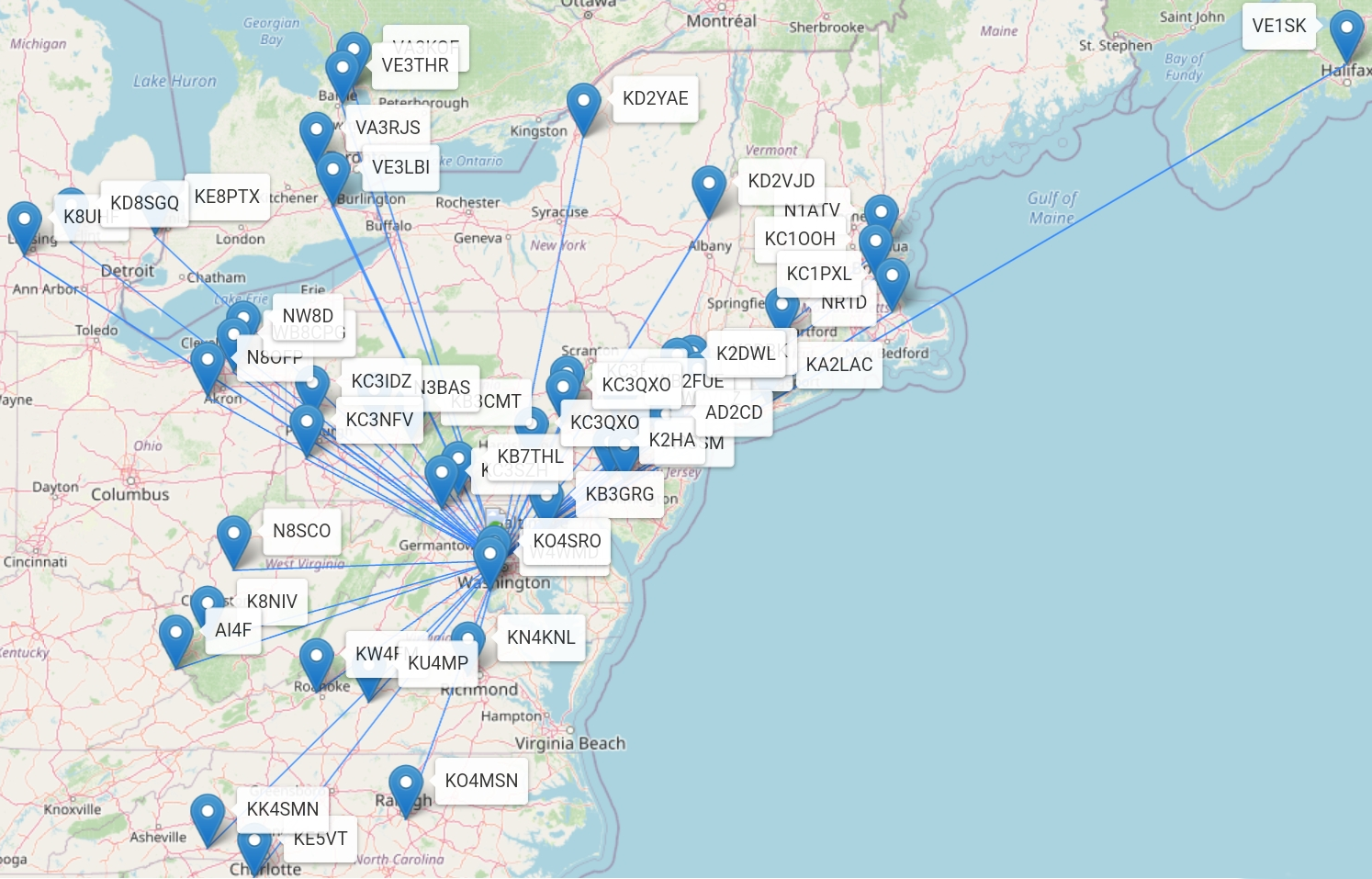
Gear used in this activation
- Icom IC-705
- Buddipole Buddistick Pro
- LDG Z100 Plus
- RigExpert Stick Pro Antenna Analyzer
- Icom LC-192
- Jackery Explorer 500
- Sony Headphones
- Samsung Galaxy S6 Lite Tablet
- Logitech K380 Bluetooth Keyboard
- Rite in the Rain Notebook
- Zebra DelGuard Mechanical Pencil
Posted on March 22nd, 2022
POTA Activation #4 - Fort Washington Park (MD) (3/5/2022)
The POTA website is a lot of fun. You can slice and dice your hunting and activations with all kinds of statistics, they have tons of fun awards to pursue, and they make it really fun to explore and daydream about parks to activate. After seeing a second state pop-up on my activations list when I activated DC, I figured it was time to get a third one on the board, too.
Even though I have lived in the area for almost my entire life, it was only in December of 2021 that I visited Fort Washington Park. Part of the National Park Service, the park has the remnants of a series of fortifications along the Potomac in the town of the same name in Prince George's County, Maryland. The first visit was to meet up with some friends so that our kids could run around and have fun together while we caught-up. While I was there I was taken aback by the beautifully elevated views of the water. I had only seen the fort from the Virginia side in the past, but being on top of them highlighted the immense scale of the place. There are a lot of buildings strewn across a large campus from different eras.
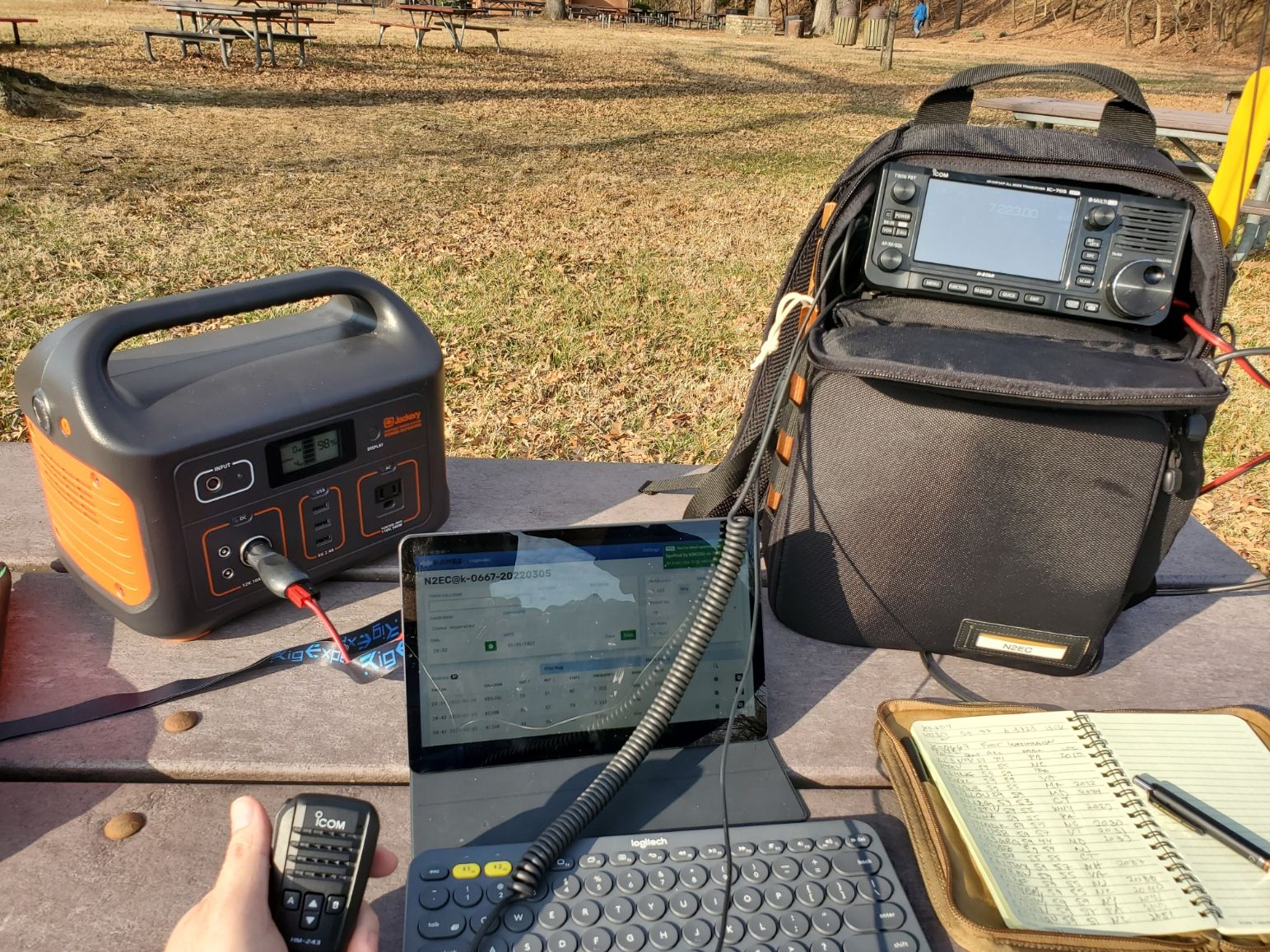
On my return trip, this time with radio in tow, I explored a picnic area that was a bit off the beaten path from the main attraction. There were many picnic tables, locked restroom facilities, and a playground. I mostly had the place to myself, with the exception of a couple families with kids playing on the playground, the occasional dog walker, and a kid with a gas powered scooter that made me very glad I had headphones with reasonable sound isolation.
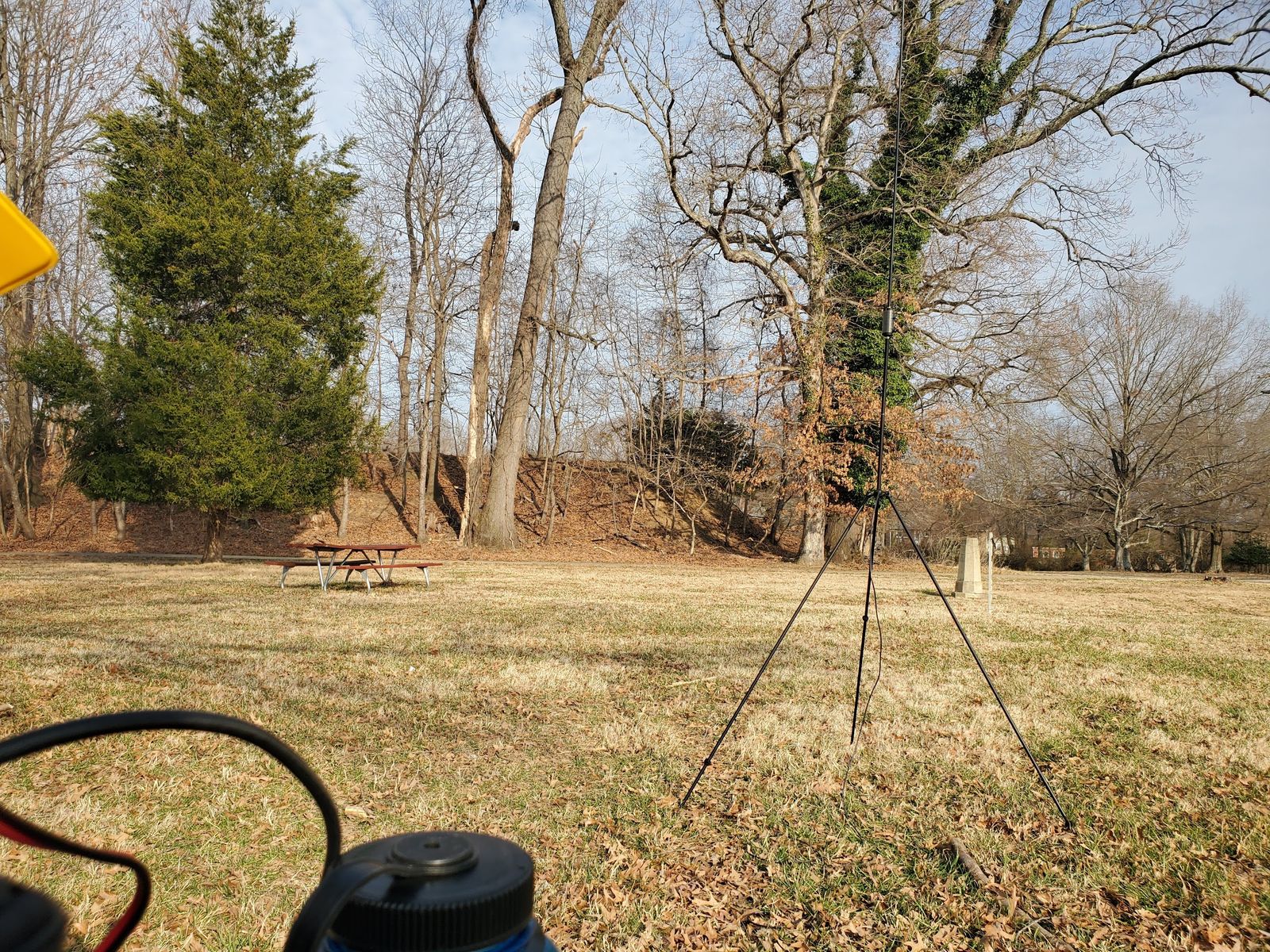
I decided to use the Buddistick Pro again to continue getting to know it better and to see what it could do. After spending the previous day on 20 m, I decided to give 40 m a try on this day. I set up camp on 7.223 MHz, spotted myself, and almost immediately was working a bit of a POTA pile-up. I was getting great signal reports across the board, and was loving the wonderfully low noise floor I was seeing on 40 while at the park. Operating outside is pure pleasure.
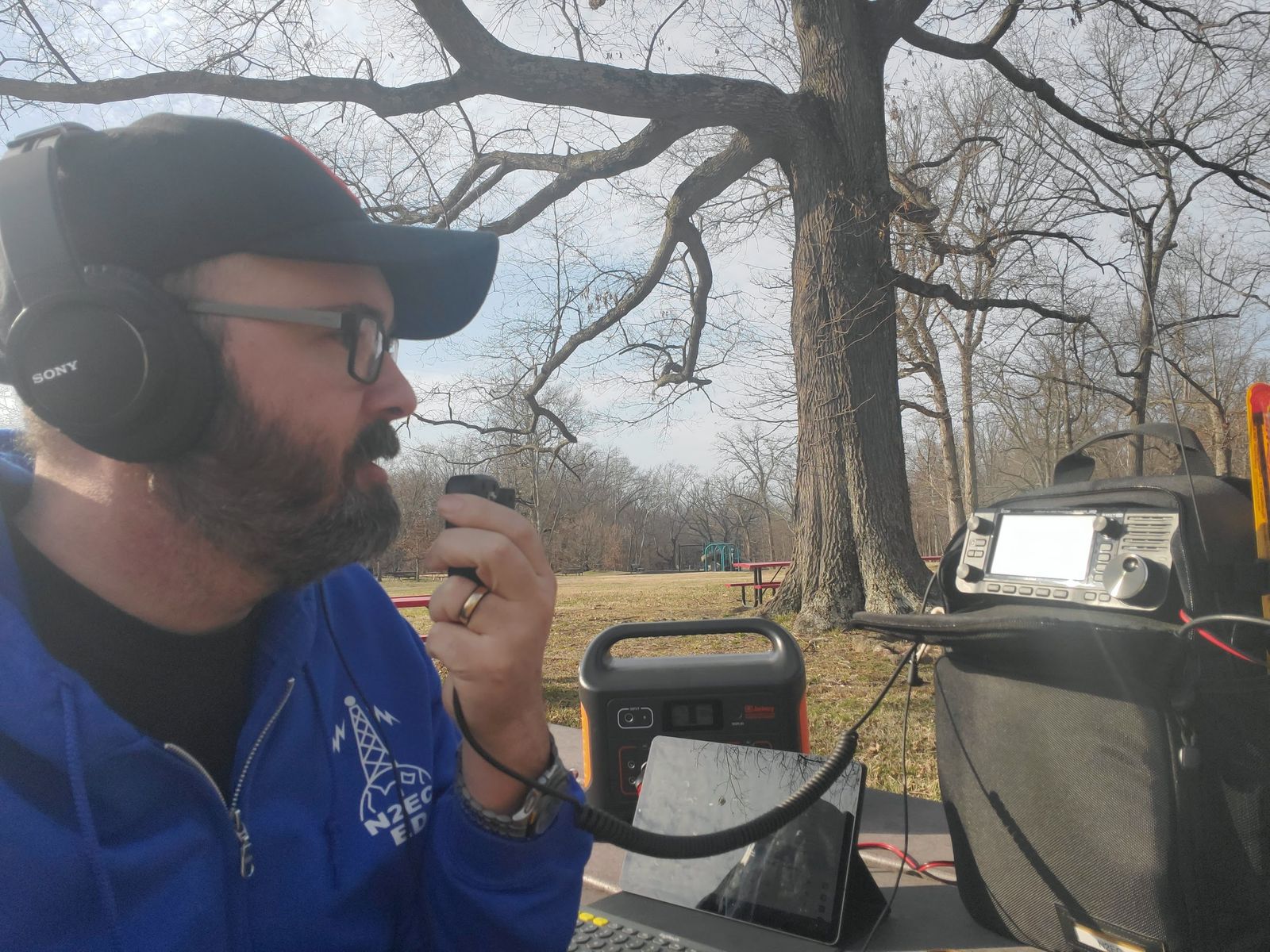
In short order I got QSOs from PA, NC, VA, MA, MD, CT, NY, VT, NH, NJ, and Ontario, Canada. I also made two Park to Park contacts as well. All told I made 34 contacts in 56 minutes and had a blast doing it.
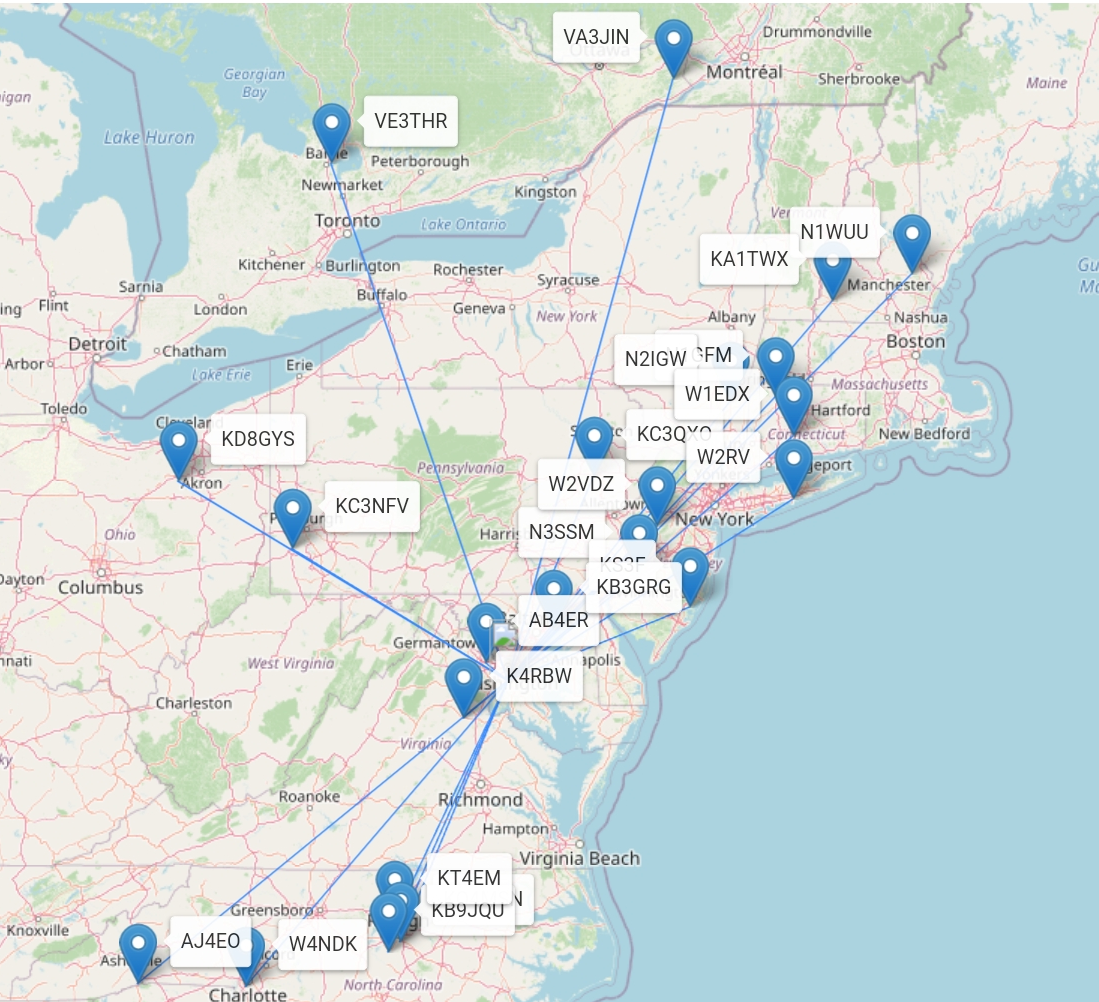
Gear used in this activation
- Icom IC-705
- Buddipole Buddistick Pro
- LDG Z100 Plus
- RigExpert Stick Pro Antenna Analyzer
- Icom LC-192
- Jackery Explorer 500
- Sony Headphones
- Samsung Galaxy S6 Lite Tablet
- Logitech K380 Bluetooth Keyboard
- Rite in the Rain Notebook
- Zebra DelGuard Mechanical Pencil
Posted on March 22nd, 2022
POTA Activation #3 - Lyndon Baines Johnson Memorial Grove (DC) (3/4/2022)
On March 4th my daughter had a day off from school for a teacher workday. Whenever she has the day off, I try to take the day off too and do something fun with her. We like being outside and going on hikes, so I thought I could show her how this POTA thing works, maybe get her on the air a little (under my call sign), and then go for a hike together along the banks of the Potomac River.
On my last POTA outing I heard a station operating from the Lyndon Baines Johnson Memorial Grove in Washington, DC and although I was unable to be heard by him, he inspired me to try an activation from there. The park is located on Columbia Island just across the Boundary Channel from the Pentagon. Due to the way that the border was defined between Maryland and Virginia, any island in the Potomac is part of Maryland (and thus to DC in the area that was given for the creation of the District of Columbia). If you drive down the George Washington Memorial Parkway, you may not realize you entered DC -- most people think of the District as being on the other side of the Potomac River, across the 14th Street Bridge. However, from the moment you get onto the Humpback Bridge just North of the 14th Street Bridge, you are, in fact, in the District of Columbia,
I am very familiar with this park. As a frequent bike commuter into DC, I would often take the footbridge from the grounds of the Pentagon over to the park if I was doing something in Crystal City, or even if I was looking for a bit of a detour to take in a bit of peace and tranquility. LBJ enjoyed the spot as a quick getaway from the city for quiet reflection and the views of the city certainly do not disappoint. There is a monument to LBJ in the grove along with some verdant grounds and a few picnic tables. Adjacent to the grove is Columbia Island Marina where many boats are docked and small restaurant is located.

I saw a picnic table in the sun a respectful distance North of the monument by a copse of trees and I started setting up my gear. You may remember from an earlier post that I had a bit of trouble with my Buddistick Pro antenna before, likely due to a capacitive coupling with the hiking pole I used to suspend the radial the antenna uses. Thankfully, the Internet was there to give some more information, and I discovered that many Buddistick Pro users had found that an electric fence post did a good job of holding up the radial. Buddipole says the radial should be about 4 feet off the ground ... conveniently, the post is 4 feet tall. The electric fence post, being for an electric fence, was also gloriously non-conductive. The only metal bit is on the base, where a metal spike gives you an easy way to get it to stay put in the ground. Additionally, being a fence post, it was designed to hold things up, so there are convenient attachment points along the length of the post perfect for attaching the radial. Although the Home Depot by me didn't have one in stock, they were able to get it shipped to store for free for the low price of $3.48. A bargain. And best of all, as soon as I used it, the antenna tuned up just as you'd expect by following the manual. Success!
I got the Buddistick Pro with the intent of using it in places where tossing a line in a tree was impossible, impractical, or forbidden. This was to be the first practical test of it. Because I was there with my daughter, my intention was for it to be a relatively short activation. I was hoping to make at least 10 QSOs and give the new antenna a good test. So, after putting K-0784 into the logs and hooking up our headphones I started calling CQ on 20m at 14.282. In short order I made a couple contacts before moving down to 14.258 due to some QRM. I got a Park to Park with NG9B out in Wisconsin, and then I got the biggest surprise of the day. Just above the noise floor, I heard a station that was trying to make a contact. It took a lot of commitment on both sides, but I was eventually able to pull his information out of the hash and make the QSO with EA1GIB in Vilagarcía de Arousa, Spain! My mind was blown -- with 10 W, the Buddistick Pro, and some determination we were able to work clear across the Atlantic ocean. Incredible! Manuel gave me a signal report of 55, which also amazed me. He was down around a 22 for me, but I was so excited when we were able to make the QSO. The Buddistick Pro definitely showed what it could do.

After that I was able to make another Park to Park with a ham radio YouTube celebrity, KB9VBR, all the way over in Wisconsin, and with two parks to boot. I finished out the activation by doing a little hunting, and then I decided to call it a day so that my daughter and I could get some lunch at the marina and soak in the scenery by the Potomac river. All told I made 16 contacts in MO, WI, GA, IL, ME, FL, and SPAIN! I could tell good things were in store for this new antenna.

Gear used in this activation
- Icom IC-705
- Buddipole Buddistick Pro
- LDG Z100 Plus
- RigExpert Stick Pro Antenna Analyzer
- Icom LC-192
- Jackery Explorer 500
- Sony Headphones
- Samsung Galaxy S6 Lite Tablet
- Logitech K380 Bluetooth Keyboard
- Rite in the Rain Notebook
- Zebra DelGuard Mechanical Pencil
Posted on March 21st, 2022
POTA Activation #2 - George Washington Memorial Parkway (VA) (2/27/2022)
For my second activation I decided to try something closer to home and went to Riverside Park in the George Washington Memorial Parkway (K-0670VA). I was a bit ambitious in my plans, as I was determined to try using a new antenna that I had not setup before, the Buddipole Buddistick Pro. The antenna is an engineering marvel, but is a bit more challenging to get going. I was able to get it assembled quickly, but was having a hard time getting it to tune to the right SWR where I wanted to operate. After about a half hour, I decided to bring out my MFJ 1984 MP end-fed half wave antenna, and was able to get quickly on the air.
In hindsight, I now know what the problem was: the Buddistick Pro requires an elevated radial (provided). I was using a hiking pole for this task, but it was aluminum. I think that there was some capacitive coupling going on there that was making a good match all but impossible. I was able to fix it later after acquiring a $3 electric fence post, but more on that another day.
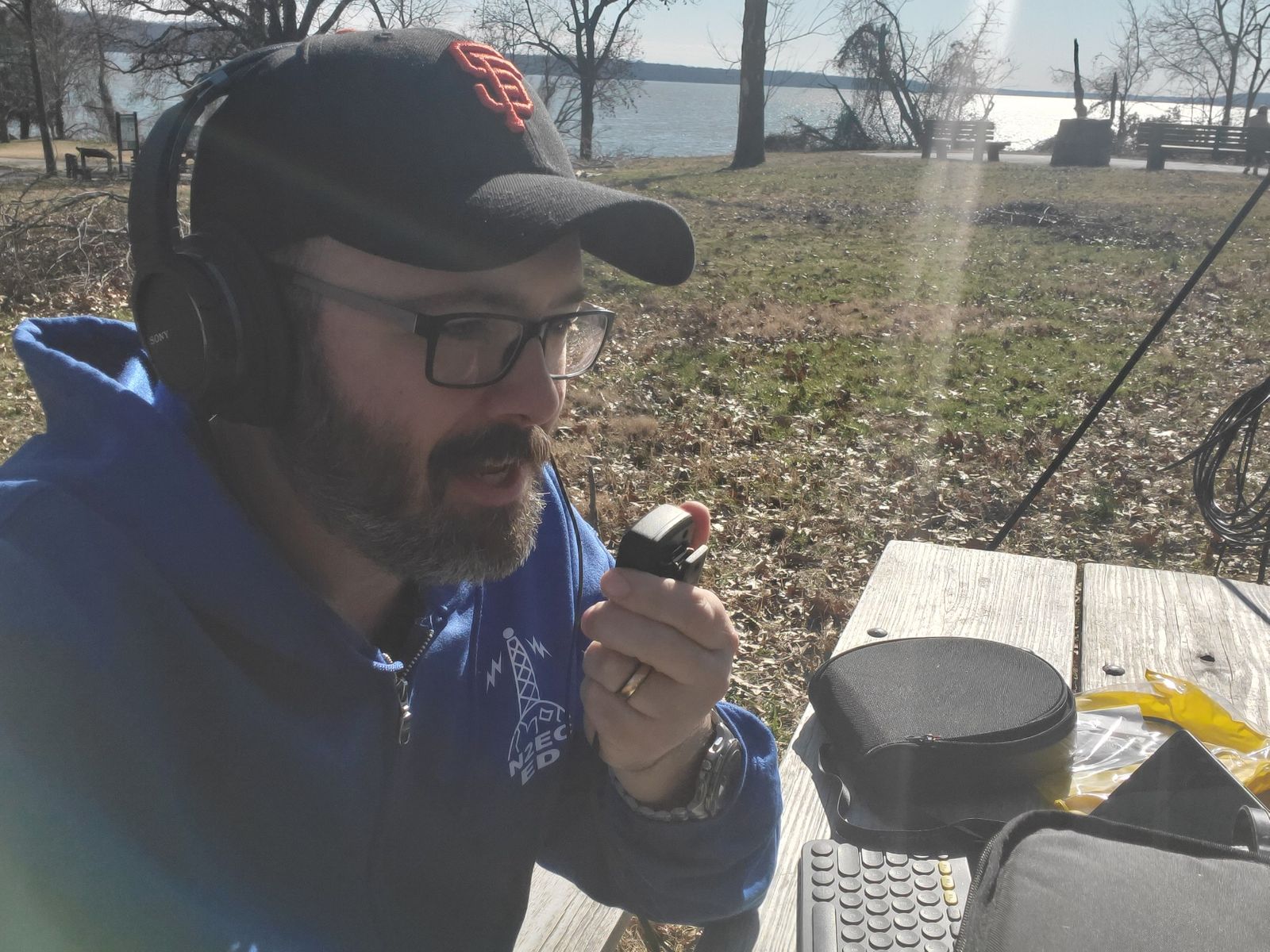
After getting the EFHW into the trees I was off and running. Below is a picture of part of the Buddistick Pro which would share in the adventures of the next activation. In the background you can see how beautiful the park is. It is nestled between the George Washington Parkway and the Mount Vernon Trail alongside the Potomac River. On the other side of the bench in the distance is the pier at George Washington's Mount Vernon. Everywhere you turn there are heritage trees and gorgeous views. Right at the crest of a small hill sit a few picnic tables under the shade of those trees, and that's where I set up.
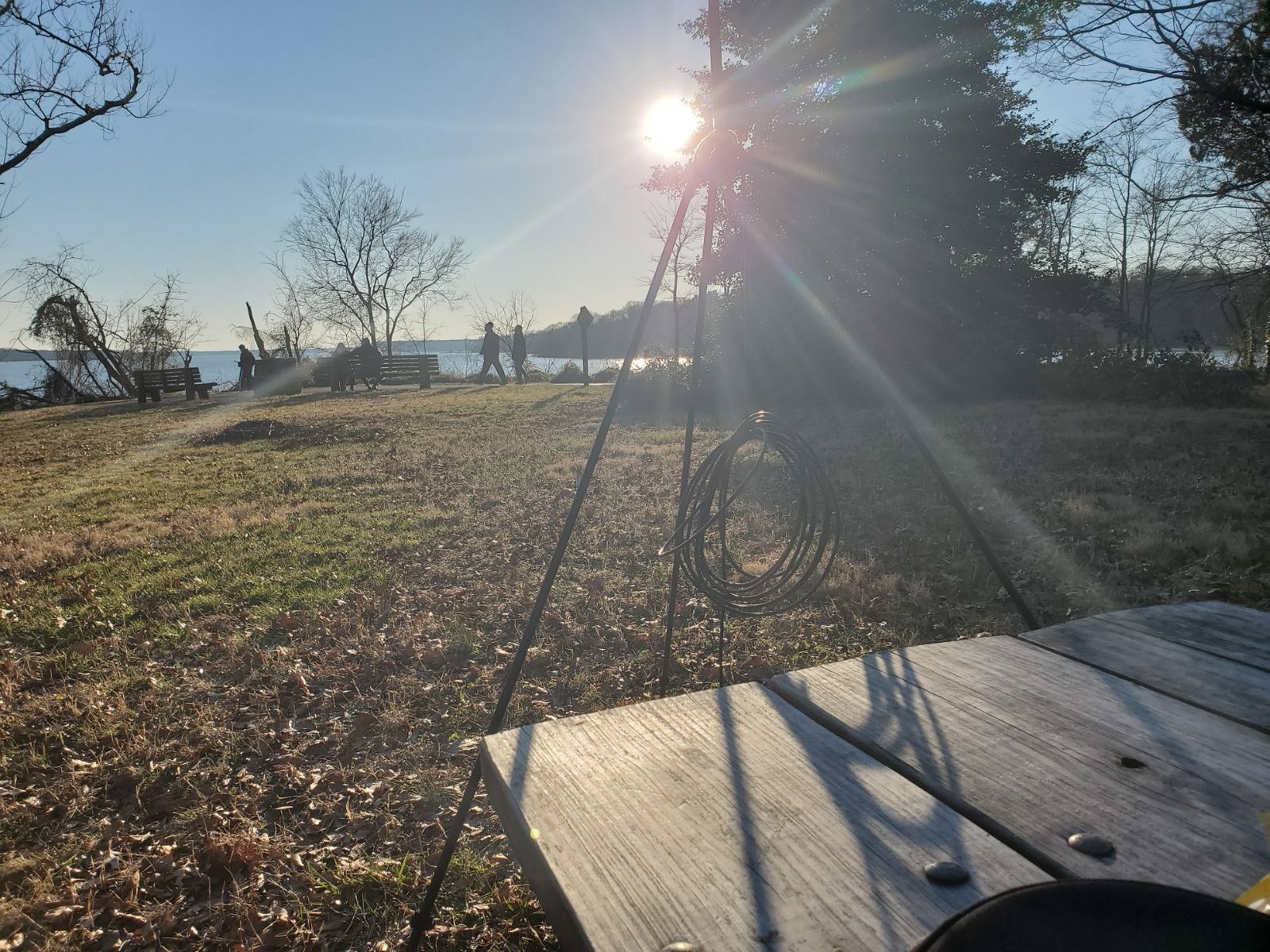
This activation had another first -- I used HAMRS for logging alongside my paper log. This made the submissions much easier, and paired with a bluetooth keyboard I was able to quickly get things into the log. Thankfully, I didn't forget any equipment this time, and I was able to set up a very comfortable operating position with a gorgeous view. I still default to paper logs (they tend not to crash -- although HAMRS has not failed me thus far), but I try to get things in the logs straightaway. If I have internet access on my phone I can even send off my logs to Parks on the Air before I even leave the park.
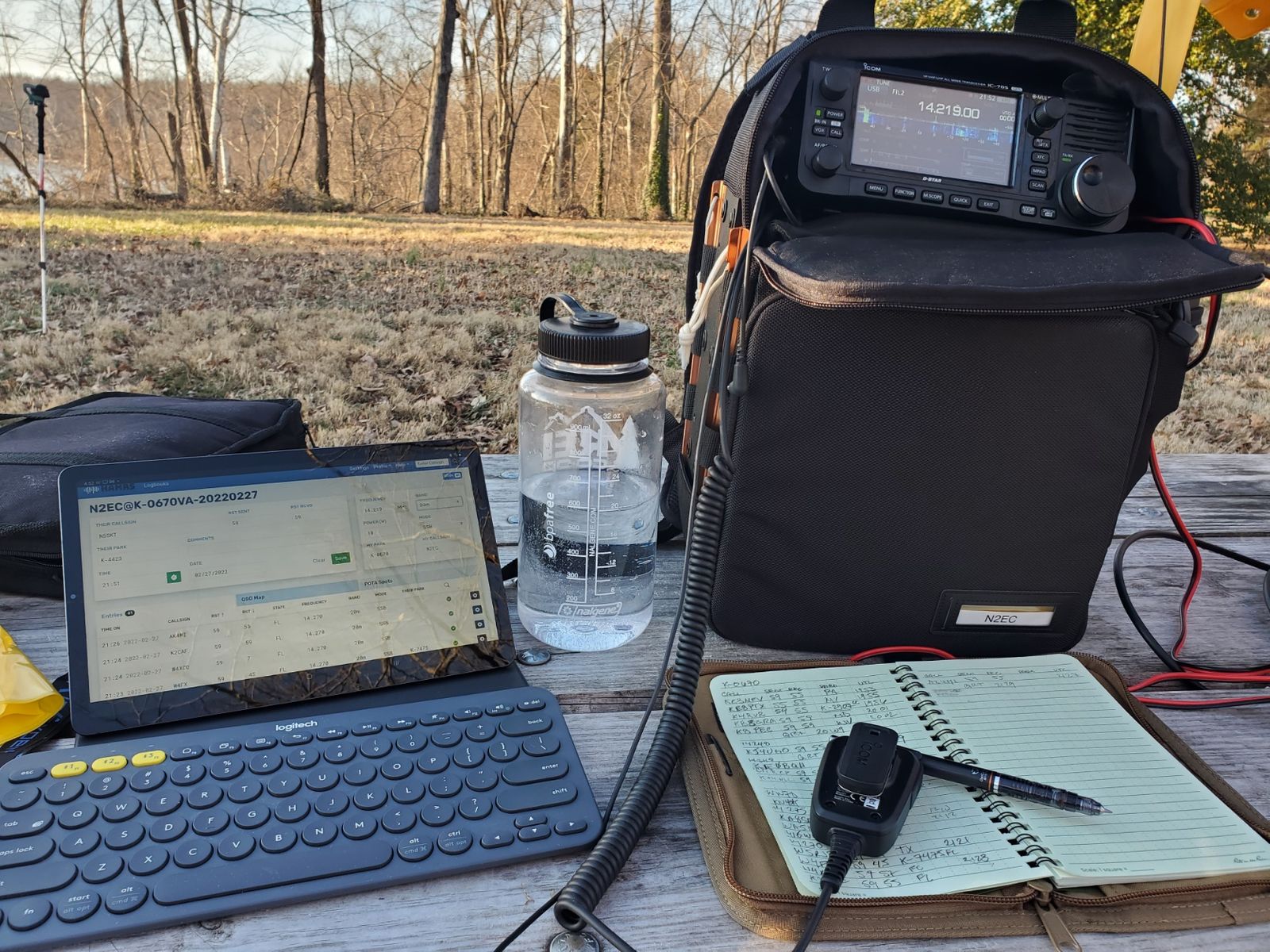
Learning from my last activation, I decided to get things started on 40m and set up on 7.290 MHz and gave myself a spot. Right away people found me, and the first call was N4D, a 1x1 special event station for the NC QSO Party. From there the calls kept coming from NC, SC, MD, PA, VA NY, KY, Ontario Canada, MI, and WV. After things slowed down a bit, I decided to go for redemption on 20m and made several more contacts with operators in AL, WI, GA, MI, LA, and FL. I also picked-up 6 Park to Park contacts, for a grand total of 43 contacts in 2:01 on the air. Amazing what 10W and a bit of wire can do.
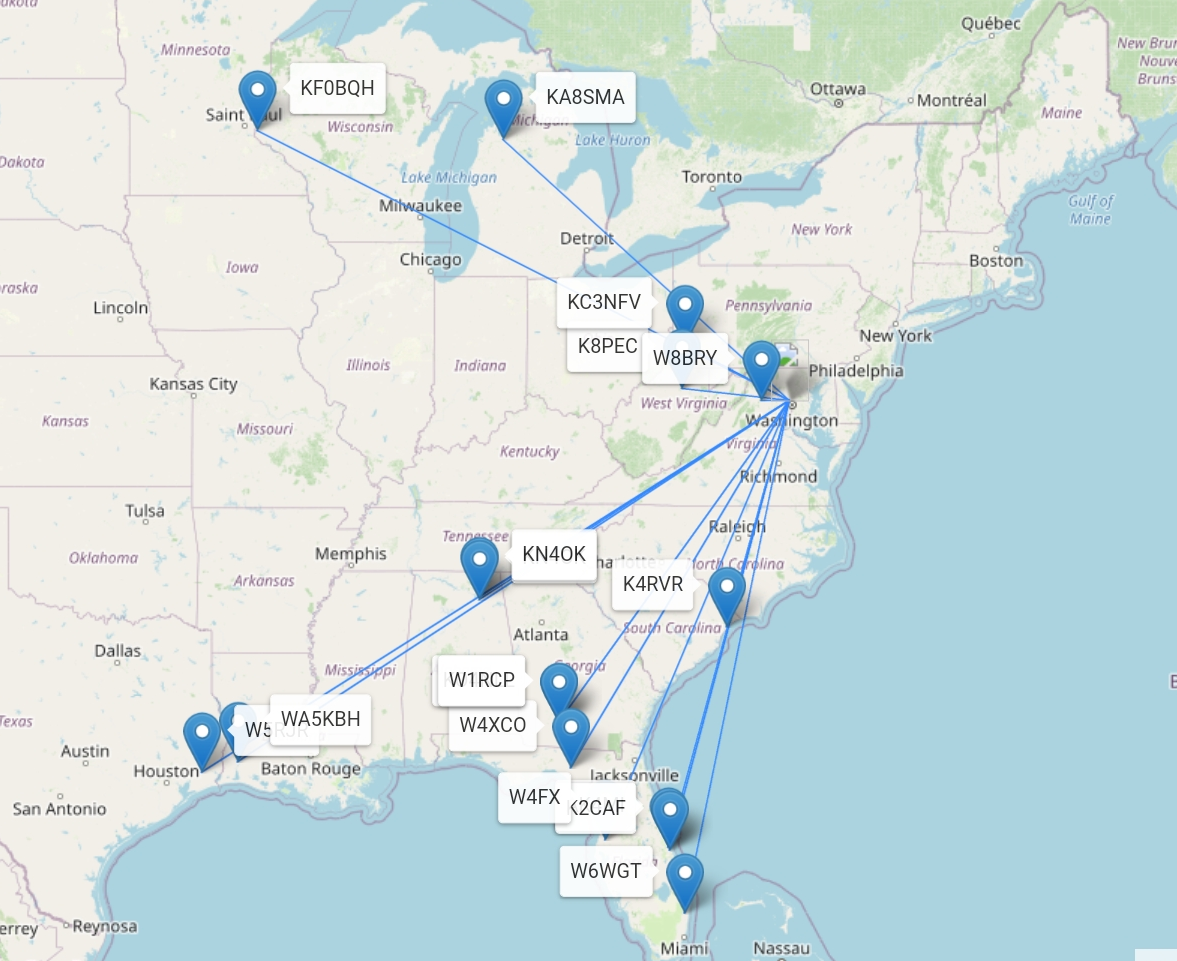
I heard a station operating out of DC, but unfortunately, he could not hear me. That missed contact inspired the next activation to come. More on that soon.
This was a great activation, even if it started out a bit rocky with the antenna issues -- and spoiler alert: those get resolved in our next episode.
Gear used in this activation
- Icom IC-705
- MFJ 1984 MP
- LDG Z100 Plus
- RigExpert Stick Pro Antenna Analyzer
- Icom LC-192
- Jackery Explorer 500
- Sony Headphones
- Samsung Galaxy S6 Lite Tablet
- Logitech K380 Bluetooth Keyboard
- Rite in the Rain Notebook
- Zebra DelGuard Mechanical Pencil
Posted on March 21st, 2022

